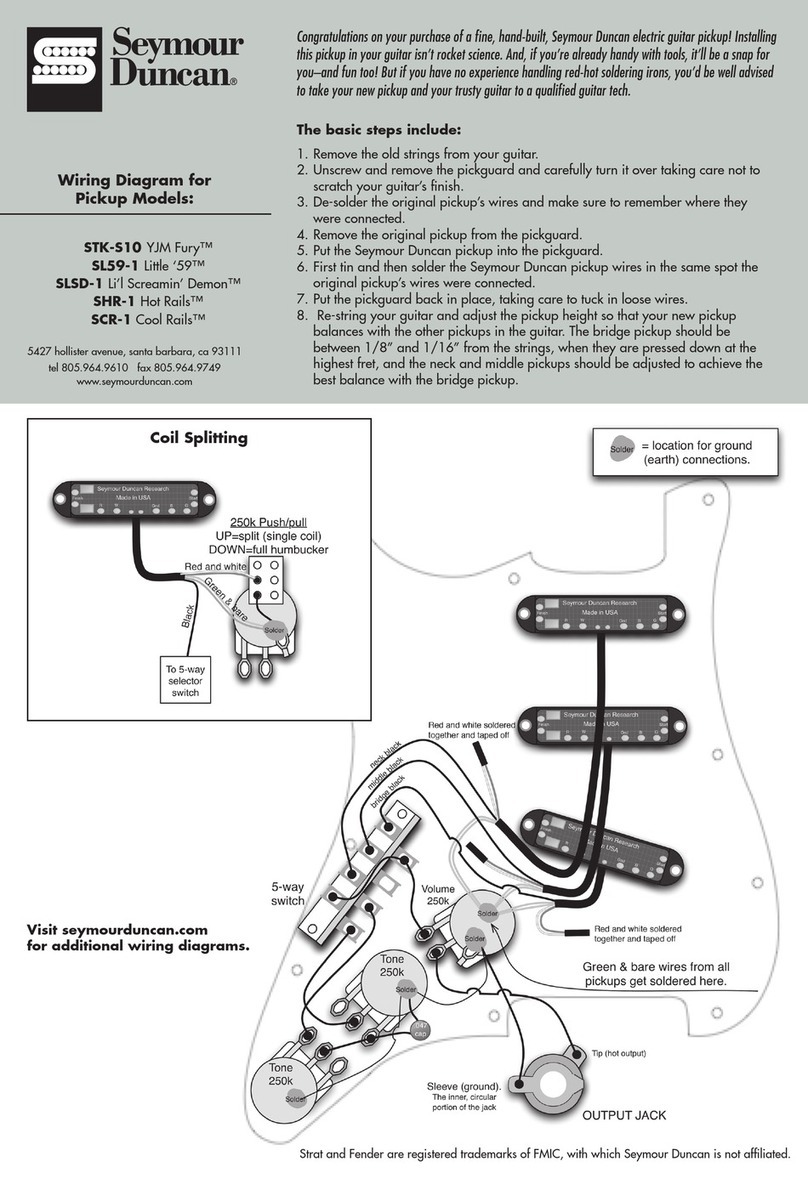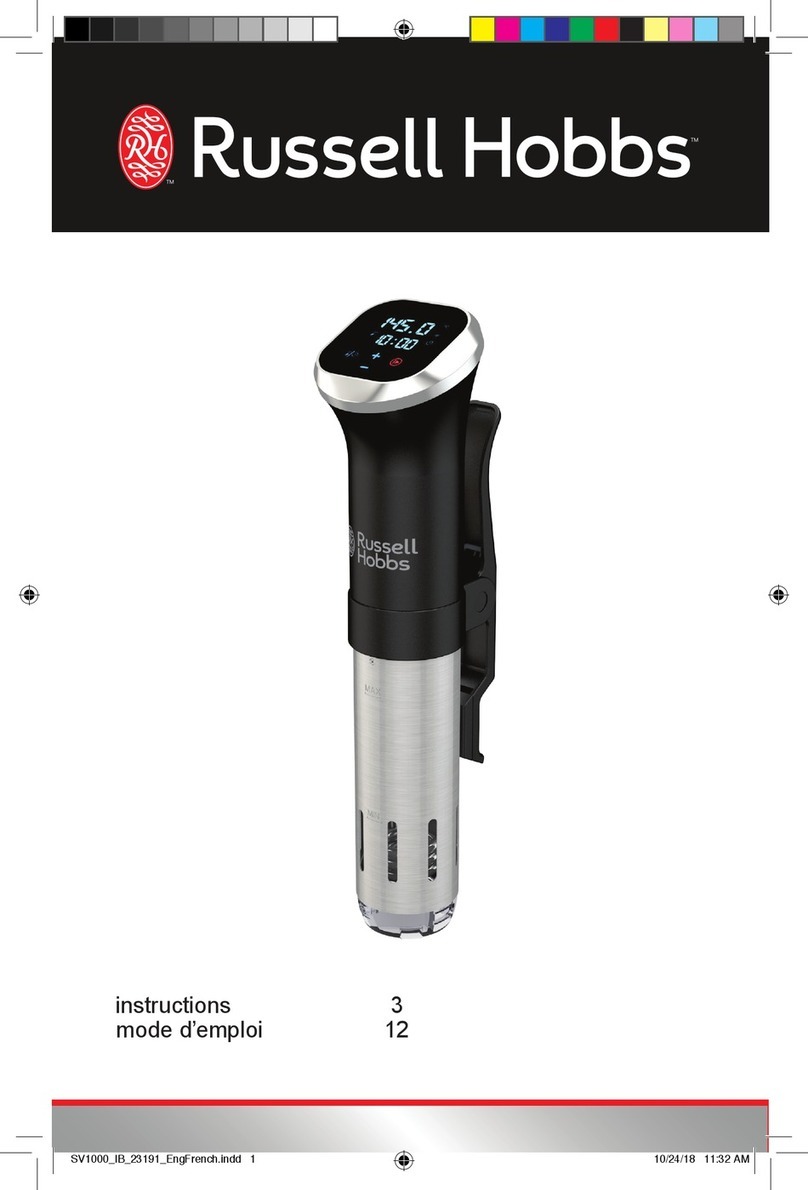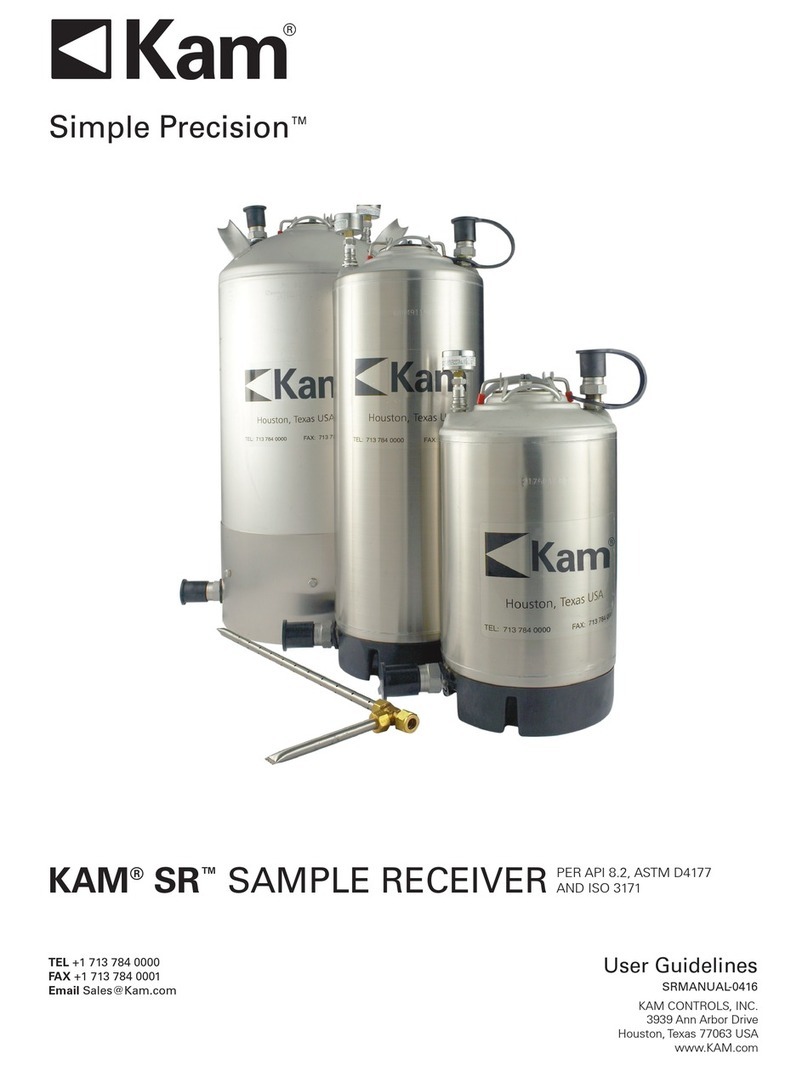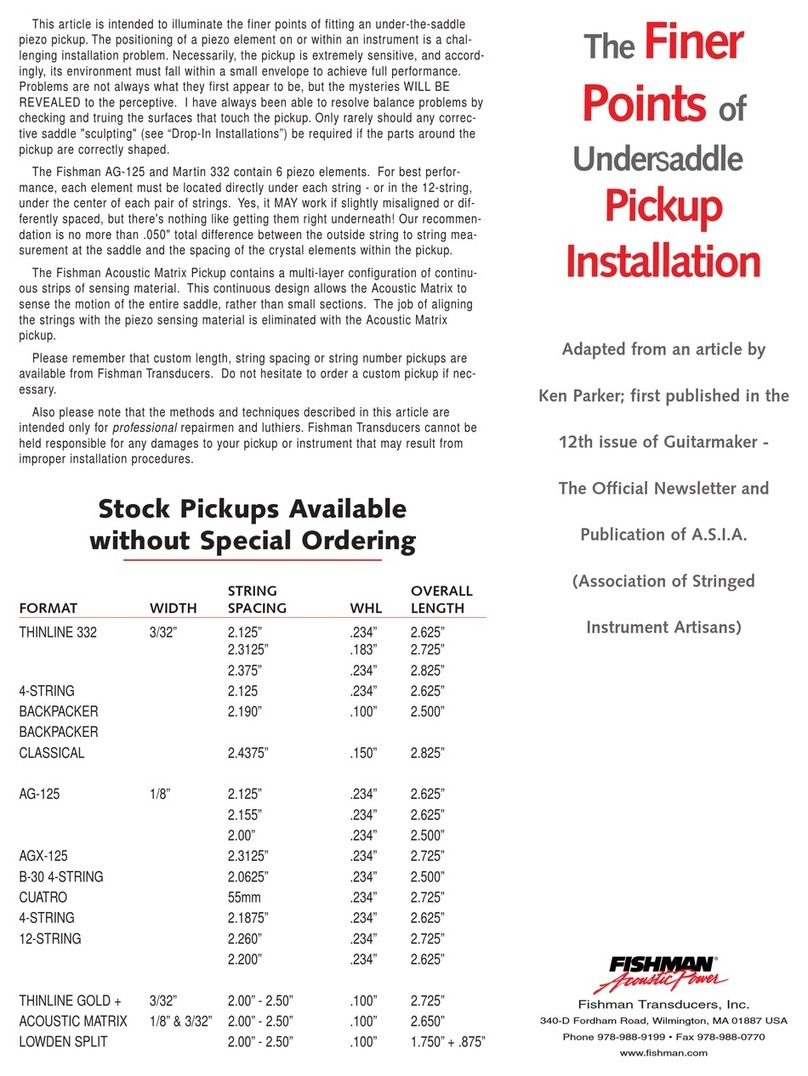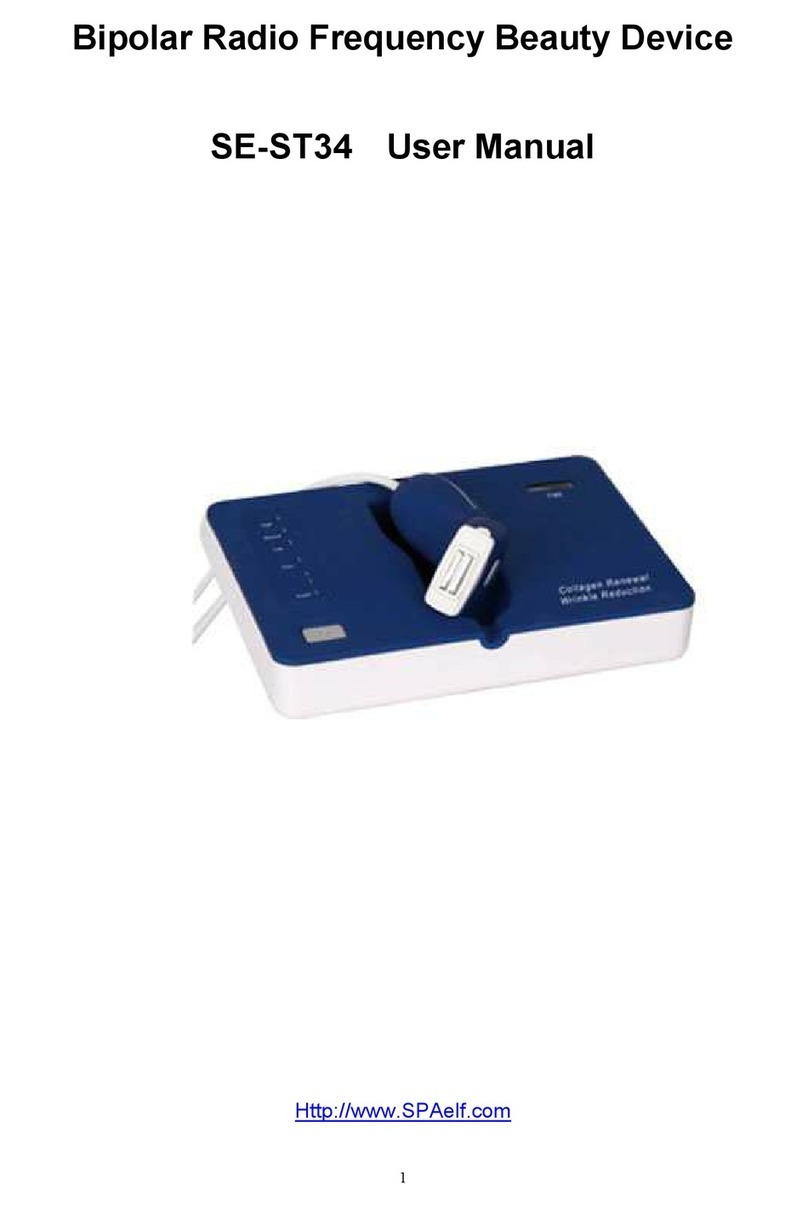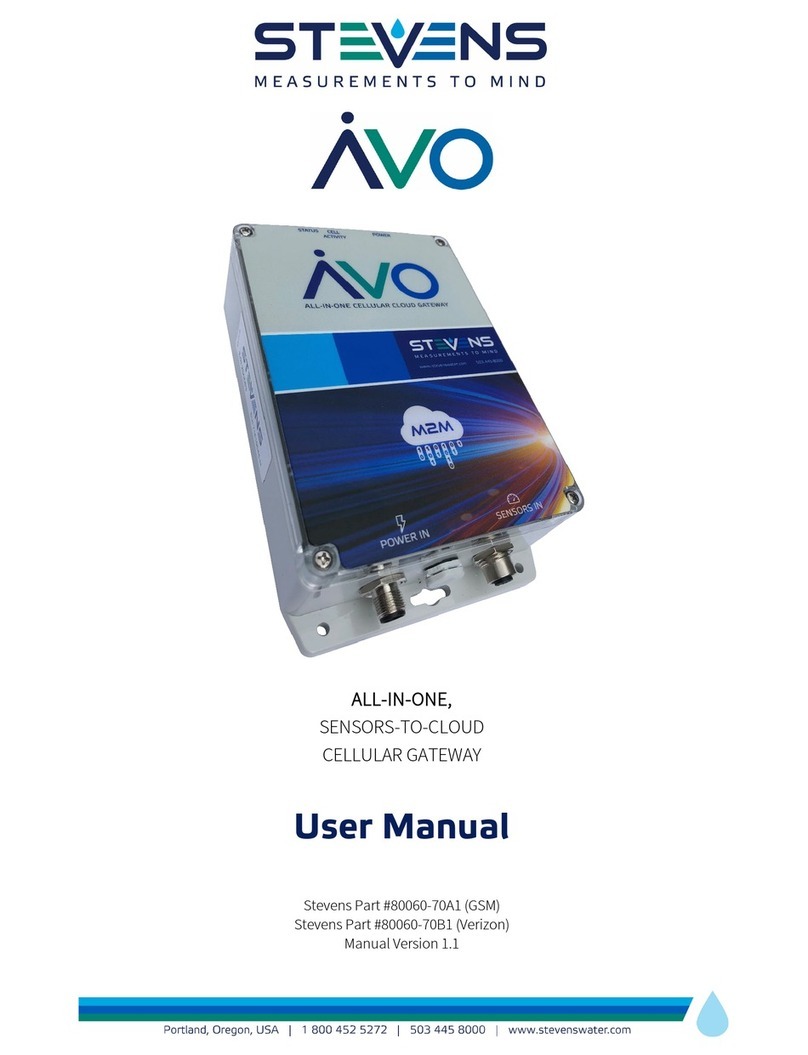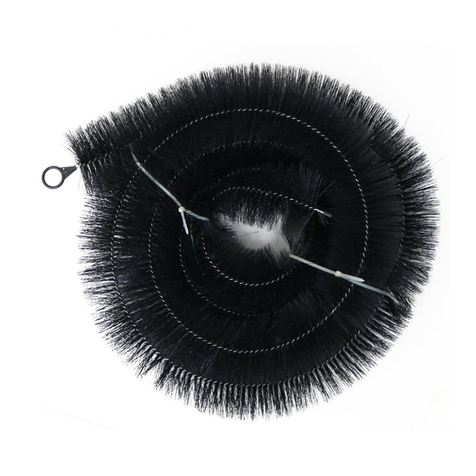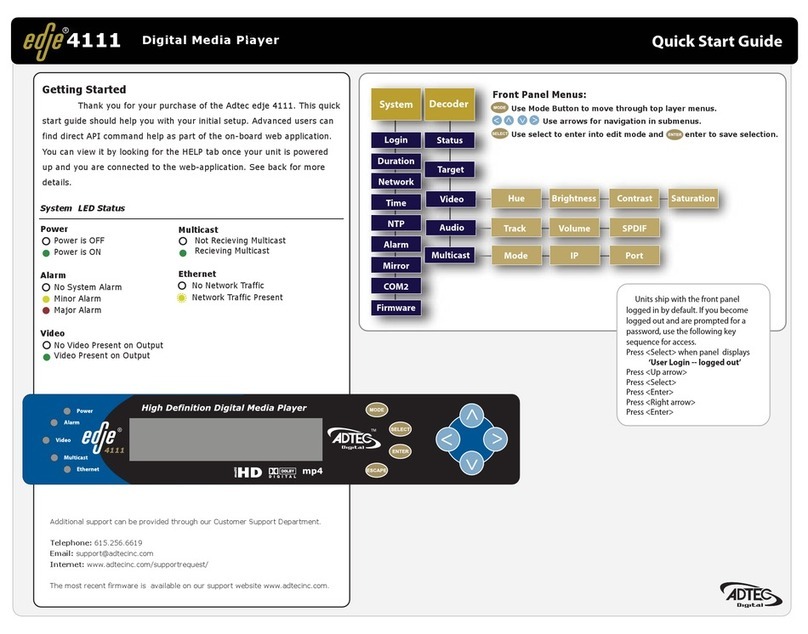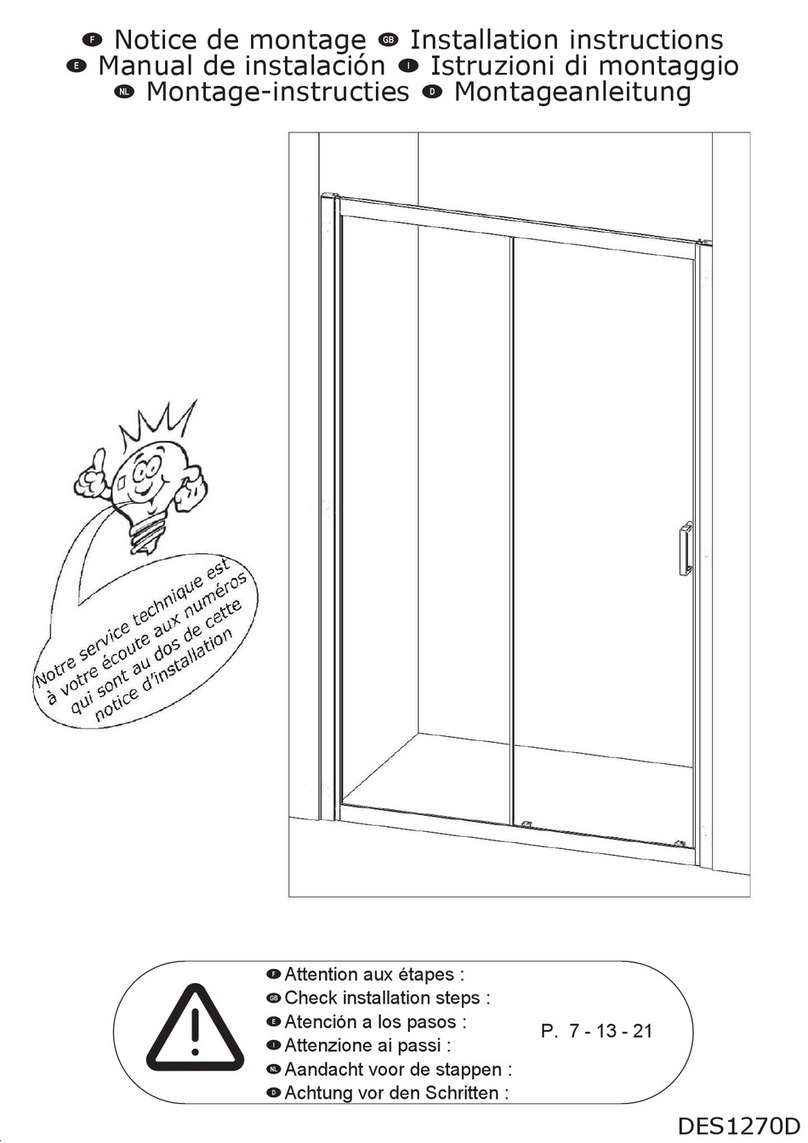Fluval Venezia Series User manual

INSTRUCTION MANUAL
MODE D’EMPLOI
BENUTZERHANDBUCH
MANUAL DE INSTRUCCIONES
Instruction Manual.qxd 29-05-2007 17:43 Pagina 1

Table of Contents
p. 4 Introduction
p. 8 Section #1
Aquarium Cabinet setting up - Glass tank verification and installation
p. 12 Section #2
External Fluval Filter installation and preparation for the start-up
p. 18 Section #3
Heater installation and preparation for the start-up
p. 20 Section #4
Decorate your aquarium to your personal taste
p. 21 Section #5
Strip Light Canopy installation and preparation for the start-up
p. 23 Section #6
Aquarium Start-up
p. 26 Section #7
Maintenance
p. 123 Customer Service
Table des matières
p. 34 Introduction
p. 38 Section nº 1
Installation du meuble d’aquarium - Vérification et installation de l’aquarium en verre
p. 42 Section nº 2
Installation du filtre extérieur Fluval et préparation du démarrage
p. 47 Section nº 3
Installation et préparation du démarrage du chauffe-eau pour aquarium
p. 49 Section nº 4
Décoration de l’aquarium avec du gravier, des ornements et des roches
p. 50 Section nº 5
Installation et préparation du démarrage de la rampe d‘éclairage
p. 52 Section nº 6
Démarrage de l‘aquarium
p. 56 Section nº 7
Entretien
p. 123 Service à la clientèle
Inhaltsverzeichnis
S. 64 Einleitung
S. 68 Abschnitt #1
Aufbau des Aquarienschranks - Überprüfung und Montage des Glasbeckens
S. 72 Abschnitt #2
Installation des Fluval Außenfilters und Vorbereitung auf die Inbetriebnahme
S. 77 Abschnitt #3
Installation des Heizers und Vorbereitung auf die Inbetriebnahme
S. 79 Abschnitt #4
Dekorieren Sie Ihr Aquarium nach Ihrem persönlichen Geschmack
S. 80 Abschnitt #5
Installation der Strip-Light-Abdeckung und Vorbereitung auf die Inbetriebnahme
S. 82 Abschnitt #6
Inbetriebnahme des Aquariums
S. 82 Abschnitt #7
Wartung
S. 123 Customer Service
Espangol
p. 94 Introducción
p. 98 Sección no. 1
Montaje de la mesa para acuarios – Verificación e instalación del tanque de vidrio
p. 102 Sección no. 2
Instalación del Filtro externo Fluval y preparación para su puesta en marcha
p. 107 Sección no. 3
Instalación del Calentador y preparación para su puesta en marcha
p. 109 Sección no. 4
Decoración del acuario a su propio gusto
p. 110 Sección no. 5
Instalación de la cubierta con luces en hilera y preparación para su puesta en marcha
p. 112 Sección no. 6
Puesta en marcha del acuario
p. 115 Sección no. 7
Mantenimiento
p. 123 Servicio a la Clientela
2 3
Instruction Manual.qxd 29-05-2007 17:43 Pagina 2

FLUVAL AQUARIUM KITS: MAIN PARTS IDENTIFICATION
IMPORTANT GENERAL SAFETY INSTRUCTIONS
IMPORTANT! The symbol “ ” has the following meaning: “WARNING! Important advice about hazards”
Read this instruction manual carefully and completely before installing the Aquarium Kit
and familiarize yourself with all safety instructions, terms and parts. The instructions for set-
ting up the Cabinet are not included in this manual but are provided in a separate manual
included in the Cabinet carton box.
DANGER - To avoid possible electric shock, special care should be taken since water is
employed in the use of aquarium equipment.
IMPORTANT: Supply all appliances through a RCD (Residual Current Device) or GFCI
(Ground Fault Circuit Interrupter) with rated residual current not exceeding 30mA.
Carefully examine all appliances before and after installation. They should not be plugged in if
there is water on parts not intended to be wet.
CAUTION – Always unplug or disconnect all appliances in the aquarium from the electricity sup-
ply before placing hands in water, before putting on or taking off parts and while the equipment is
being installed, maintained or handled. When inserting or removing equipment from the water,
always pull out all main electricity plugs. Never yank the cord to pull the plug from the outlet.
Grasp the plug and pull to disconnect. Always unplug an appliance from an outlet when not in use.
All appliances are suitable for indoor use only . Do not install or store the appliances where
they will be exposed to the weather or to temperatures below freezing.
If an extension cord is necessary, a cord with proper rating should be used. A cord rated for less
amperes or watts than the appliance rating may overheat. Care should be taken to arrange the
cord so that it will not be tripped over or pulled. The connection should be carried out by a qual-
ified electrical installer.
This is not a toy. Close supervision is necessary when any appliance is used near children.
Before handling the aquarium tank and cabinet, check their weight in the table on page 4 to
assess whether you have the capability and means to handle them without risk or personal injury.
FLUVAL VICENZA and VENEZIA Aquarium Kits
Instruction Manual
Introduction
This instruction manual is for the following Fluval Aquarium Kits:
Vicenza 180 Vicenza 260
Venezia 190 Venezia 350
All kits include a tank, a cabinet, a Strip-Light canopy, a Fluval external filter and a heater.
The Fluval external filter can be connected to the tank easily and safely, thanks to the new “Easy-
Connect” system, which makes connecting to powerful external filtration systems easy and eliminates the
use of unsightly hosing and prominent cross rim devices.
The kits are packaged in 2 separate boxes:
- One box contains the glass tank with the Strip-Light canopy and an inner white box
containing the external filter, the heater, all EasyConnect attachments, and an instruction
manual.
- The other box contains the knocked-down cabinet and setup instructions.
Main technical characteristics
Important notes:
* Aquarium capacity does not refer to the maximum capacity of the glass tank but to the
approximate volume of water up to the “max water level“ line (without gravel).
** Approx. weight including filter (without water), heater and Strip-Light Canopy
*** approx. weight with the aquarium filled with water and a 15 cm (6”) thick layer of gravel only
FLUVAL AQUARIUM KIT: PRODUCT RANGE
4 5
Vicenza 180 Vicenza 260 Venezia 190 Venezia 350
Model Aquarium Weight of Weight of Cabinet Strip-Light Heating Filtration
capacity* the Aquarium the Aquarium Weight Canopy lights Power System
without water** full with water***
Liters/U.S. gal. Kg/Lb Kg/Lb Kg/Lb Type/W W Type
Vicenza 180 151 / 39.8 41 / 90 225 / 495 28 / 61 T5 / 2x24 200 Fluval 205
Vicenza 260 248 / 65.5 60 / 132 370 / 815 38 / 84 T5 / 2x39 300 Fluval 305
Venezia 190 174 / 45.9 45 / 99 265 / 584 32 / 70 T5 / 2x24 200 Fluval 205
Venezia 350 294 / 77.6 77 / 170 440 / 970 45 / 90 T5 / 2x39+2x8 300 Fluval 405
STRIP LIGHT CANOPY
HEATER
GLASS TANK
CABINET
EXTERNAL FILTER
LIGHT TIMER
(IF PRESENT)
OUTPUT
REVERSIBLE DOOR
INTAKE
“ ”
Instruction Manual.qxd 29-05-2007 17:43 Pagina 4

7. Place small plants in the aquarium refer to Section #4 of this Instruction Manual
8. Fill the aquarium with water refer to Section #4 of this Instruction Manual
up to half its height
9. Place high plants in the aquarium refer to Section #4 of this Instruction Manual
10.Top up the aquarium up to refer to Section #4 of this Instruction Manual
“max water level” line
11.Prepare the Strip-Light Canopy for start-up refer to Section #5 of this Instruction Manual
and place it on the aquarium top
B. AQUARIUM START-UP
12.Plug in the External Filter refer to Section #6 of this Instruction Manual
13.Plug in the heater refer to Section #6 of this Instruction Manual
14.Plug in the Strip-Light Canopy refer to Section #6 of this Instruction Manual
15.Program the Light-Timer, if included, refer to Section #6 of this Instruction Manual
according to your requirements
16.Add the fish after the aquarium has matured
MAINTENANCE
For any maintenance operation please refer to Section #7
7
WARNING. Use a drip loop. A “drip loop” should be made by the user for each
cord connecting an aquarium appliance to a socket (see illustration). The “drip
loop” is that part of the electrical cord below the level of the socket
(or connector, if an extension cord is used) to prevent water from running along
the cord and coming in contact with the socket. If the plug or socket does
get wet, DON’T unplug the cord. Disconnect the fuse or circuit breaker that
supplies power to the appliance. Then unplug and examine for presence of
water in socket.
WARNING. Risk of overheating: do not place any objects on the aquarium or any other appliance
connected to the aquarium at any time.
If air stones are used, always keep them in the middle of the aquarium to avoid water leaks due
to capillary action around the top frame.
ADDITIONAL SAFETY INSTRUCTIONS FOR THE INSTALLATION AND MAINTENANCE OF
SALTWATER AQUARIUMS
It is commonly known that salt water is far more corrosive, electrically conductive, and generally
degrades plastic and metal parts at an accelerated rate versus fresh water. To minimize salt accu-
mulations on the aquarium, take note of the following recommendations:
1. Make sure that the filter outputs do not spray above the water surface; position them below the
water surface with a slight downward angle, but allow for surface movement (which contributes
to oxygenation).
2. If an air pump must be used, frequent removal of salt deposits will be necessary.
3. Keep the water level as constant as possible (top up regularly to make up for evaporation).This
is beneficial in providing stable salinity and will help protect the canopy.
4. Clean all aquarium components that come into contact with salt water at least every 15 days.
Use a wet cloth (never use chemical products or detergents). Simple lemon juice may be
useful for removing calcareous encrustation. Rinse thoroughly afterward to eliminate acid
residue.
The electrical cords of the Strip-Lights and the heater can exit the aquarium through the rear
openings of the aquarium top frame. For a neat installation, the cords can be supported inside the
tank by special clips hooked to the aquarium’s internal top rim.
SETTING UP YOUR FLUVAL AQUARIUM
For proper installation and start-up of your aquarium, please follow these guidelines:
A. PREPARING THE AQUARIUM KIT FOR START-UP
1. Assemble the aquarium cabinet refer to Section #1 of this Instruction Manual
and to the separate Instruction Manual which
is found in the cabinet box.
2. After verification, place the cabinet refer to Section #1 of this Instruction Manual
and the aquarium tank in their final location
3. Install the water intake/output systems refer to Section #1 of this Instruction Manual
4. Set up the filter unit and connect it to the tank refer to Section #2 of this Instruction Manual
5. Position the heater in the tank refer to Section #3 of this Instruction Manual
6. Decorate your aquarium with backgrounds, refer to Section #4 of this Instruction Manual
rocks and gravel
6
DRIP LOOP
¡
Instruction Manual.qxd 29-05-2007 17:43 Pagina 6

Always take care not to damage the seals at the edges of the glass panels while maintaining your
aquarium.
Never use toxic or aggressive substances to clean your aquarium.
PLACING THE AQUARIUM WITH ITS CABINET IN THE FINAL LOCATION
The location of the aquarium is very important. Place it away from direct sunlight. This will reduce the
chances of excessive algae build-up and prevent overheating. Keep the aquarium away from other
sources of heat (air ducts, radiators, etc.) for proper temperature maintenance. Drafts should be avoided
as well. Do not place the aquarium where water spills will cause damage.
The cabinet’s dimensions and structure are specifically designed to bear the weight of a complete-
ly filled aquarium. Using a different cabinet or support may cause an unsafe condition.
WARNING. Ensure that the selected location can support the total weight of the cabinet and a
completely filled aquarium.
The selected location should have an even and level surface. Place the aquarium and cabinet close to an
electrical outlet.
After placing the cabinet, use a spirit level to ensure that it is perfectly level. The cabinet
has special feet that can easily be adjusted using the tool supplied with the cabinet.
IMPORTANT: Place the aquarium tank directly on the cabinet without any additional support or
damper in between. NEVER insert lining between the cabinet and aquarium. If necessary, use the
cabinet feet to make the final leveling adjustments.
INSTALLING WATER INTAKE/OUTPUT WITH EASYCONNECT SYSTEM
All Fluval Vicenza and Venezia aquariums feature the new and innovative
EasyConnect system, which allows you to directly connect the tank to
theexternal filter through the bottom glass using special fittings.
With other systems, the same type of connection is achieved using
complexdevices that often require the services of expert technicians.
With EasyConnect, the installation is done easily and safely, giving your
aquarium a clean and professional look.
Before proceeding, identify and count all parts required by refer-
ring to the exploded view in the side illustration. If any part is
missing, do not proceed with the installation and contact the
store or Hagen Customer Service.
Before proceeding, check stems (A) for the presence of all 3 rub-
ber rings (C). Do not proceed with the installation if one of the rub-
ber rings (C) is missing and contact the store or Hagen Customer
Service.
9
SECTION #1
SETTING UP THE AQUARIUM CABINET – VERIFYING & INSTALLING THE GLASS TANK
SET UP THE AQUARIUM CABINET
Do not attempt to set up the cabinet without reading and following the instruction manual.
The manual is included with the cabinet. If it is missing or unusable, contact the store or Hagen
Customer Service to get another copy.
The Fluval Aquarium must be placed on the appropriate Fluval cabinet designed for that aquari-
um. Fluval cabinets are guaranteed to provide a suitably solid and level surface that will not bend
or warp. Using any other form of support will invalidate your guarantee.
Never attempt to move or transport the Cabinet with the glass tank or any other load on top of it.
Remove all contents from the box. Before you begin, identify, count and check that you have all
the parts needed for assembly. If any part is missing, do not proceed with the setup and contact
the store or Hagen Customer Service.
Set up the Cabinet following the Instruction Manual.
After completing the assembly, check that ALL parts have been properly used.
The aquarium cabinet is made of wood. We recommend keeping all cabinet surfaces dry.
VERIFYING THE AQUARIUM GLASS TANK SEALING
The aquarium glass tank comes complete with bottom and top plastic frames glued to it. Do not try to
remove the top and bottom frames.
Although the glass tank was manufactured with maximum care and the most advanced techniques,
inspect it carefully to ensure that it was not damaged during handling and transportation.
1. Bring the glass tank to an area where any possible water leakage does not pose a problem.
2. Inspect the glass tank for damages or cracks.
3. If there is no damage, fill the tank with water and check for leaks.
4. If no leak is detected, empty the aquarium and proceed with the aquarium installation.
The tank is made of glass. Always handle it with the extreme care.
Never attempt to move or transport the tank if it is not completely empty of water or any other
material.
8
OUTPUT NOZZLE (N)
OUTPUT STEM (B)
INTAKE STRAINER (S)
CONNECTOR STEM (A)
CONNECTOR STEM
RUBBER RINGS (C)
TANK OPENING
PLUG (P)
(Q)
RING NUT (R)
OUTPUT GROUP INTAKE GROUP
Instruction Manual.qxd 29-05-2007 17:43 Pagina 8

11
Locate the 2 openings (l) and (O) in the tank’s bottom glass and the
corresponding holes in the cabinet. The 2 openings in the tank’s
bottom glass come complete with factory-installed special plastic
fittings, which must never be removed, turned or loosened, and
with two sealing plugs (P) and (Q). The output system should be
installed in the opening (O), and the intake should be installed in
the opening (I).
Once the output/input systems are installed, do not shift
the tank with respect to the cabinet, as this may damage
the output/input systems and the glass tank.
Do not force, loosen or turn the factory-installed special fit-
tings on tank openings (I) and (O).
Output system installation
1. Manually unscrew plug (P) and remove plug (Q) from opening (O) (Pict.1).
Important: keep plugs (P) & (Q) for any future use.
2. Slip connector stem (A) fully through opening (O) until it stops (Pict.2)
3. Open the cabinet. Screw and tighten the ring nut (R) onto the bottom end
of stem (A) (Pict. 3).
4. Insert the outlet nozzle (N) into one end of outlet stem (B)
5. Insert outlet stem (B) in connector stem (A) (Pict.4).
6. Regulate the height of the outlet nozzles according to your requirement by
sliding outlet stem (B) along connector stem (A).
7. The outlet nozzles (N) can be easily rotated to divert the water flow
where desired.
Direct the water jets so as not to let water overflow from the tank.
Avoid directing the water jets toward the Strip-Light(s) of the canopy
Intake system installation
1. Manually unscrew plug (P) and remove plug (Q) from opening (I) (Pict.1).
Important: keep plugs (P) & (Q) for any future use.
2. Slip the second connector stem (A) fully through opening (I) until it stops (Pict.2).
3. Open the cabinet. Screw and tighten the nut ring (R) onto the bottom end of
the second stem (A) (Pict.3).
4. Insert the intake strainer (S) in connector stem (A) (Pict.5).
The height of the intake strainer is high enough to suit most standard aquarium decorations. When
decorating the aquarium, ensure that it remains at least 5 cm (2”) from the gravel bottom at all
times to prevent it from sucking gravel or sand and to ensure that decorations do not block the
passage of water. Ornaments and rocks should be placed while the aquarium is still dry.
CAUTION! Never force Connector Stems (A) sideways, as this may damagethe output/input
systems and the glass tank.
If using a different filtration system that does not require the inlet/outlet systems supplied with this unit
(e.g. an internal filter), restore the initial conditions by removing the 2 connector stems (A) and closing
openings (O) and (I) with plugs (P) & (Q). Plug (Q) ensures a watertight seal and has to be inserted into its
seat by pressing it. Plug (P) is designed to protect plug (Q) and ensure that plug (Q) remains in its seat
properly. Screw plug (P) by hand only until it will go without forcing it. DO NOT USE ANY TOOLS, AS
DOING SO MAY DAMAGE THE UNIT.
10
LOCATE THE 2 OPENINGS IN THE TANK’S
BOTTOM GLASS AND ENSURE THAT THE
CORRESPONDING OPENINGS IN THE
CABINET ARE ALIGNED WITH THEM.
PLUG (P) + (Q)
RNG NUT (R)
OUTPUT
NOZZLE (N)
OUTPUT
STEM (B)
INTAKE
STRAINER (S)
CONNECTOR
STEM (A)
PICT. 1
PICT. 3 PICT. 4 PICT. 5 PICT. 6
PICT. 2
Instruction Manual.qxd 29-05-2007 17:43 Pagina 10

* Pump Output: flow rates were measured with pump only, with no attachments or accessories
connected to it.
** Filter Circulation: flow rates were measured with intake and output hoses, without any in-tank
accessories or filtering media.
13
SECTION #2
INSTALLING THE FLUVAL EXTERNAL FILTER AND PREPARING FOR START-UP
IMPORTANT SAFETY INSTRUCTIONS
WARNING - To guard against injury, basic safety precautions should be observed,
including the following:
1. READ AND FOLLOW ALL SAFETY INSTRUCTIONS
And all the important notices on the appliance before using the filter pump.
Failure to do so may result in loss of fish and/or damage to this appliance.
2. DANGER - To avoid possible electric shock, special care should be taken since water is employed
in the use of aquarium equipment. For each of the following situations, do not attempt repairs
yourself; return the appliance to an authorized service facility for service or discard the appliance.
A. If the appliance falls in the water, DON‘T reach for it! First unplug it and retrieve it. If electrical
components of the appliance get wet, unplug the appliance immediately.
B. If the appliance shows any sign of abnormal water leakage or if the RCD (or GFCI- Ground Fault
Current Interrupter) switches off, disconnect the power supply cord from the main power supply
and remove the pump from the water.
C. Carefully examine the appliance after installation. It should not be plugged if there is water on
parts not intended to be wet.
D. Do not operate any appliance if it has a damaged cord or plug, or if it is malfunctioning or it is
dropped or damaged in any manner. The power cord of this appliance cannot be replaced; if the
cord is damaged, the appliance should be discarded. Never cut the cord.
E. To avoid the possibility of the appliance plug or socket getting wet, make a DRIP LOOP
according to the instructions reported in chapter “IMPORTANT GENERAL SAFETY
INSTRUCTIONS“ in the Introduction.
3. Close supervision is necessary when any electrical appliance is used near children. Do not allow
children to use this appliance. This appliance is not a toy.
4. To avoid injury, do not touch moving parts or hot parts.
5. CAUTION – Always unplug or disconnect all appliances in the aquarium from the electricity supply
before placing hands in water, before putting on or taking off parts and while the equipment is being
installed, maintained or handled. Never yank the cord to pull the plug from the outlet. Grasp the plug
and pull to disconnect. Always unplug the appliance from the outlet when not in use.
6. This is an aquarium filter pump. Do not use this pump for other than its intended use (i.e.: do not
use in swimming pools, bathrooms, etc.). The use of attachments not recommended or sold by the
appliance manufacturer may cause an unsafe condition.
•Do not use this filter pump in swimming pools or other situations where people are immersed.
•This filter pump is suitable for use in water temperatures up to 35° C / 95° F.
•Do not use this filter pump with inflammable or drinkable liquids.
7. This filter pump is suitable for INDOOR use only . Do not install or store the appliance where
it will be exposed to the weather or to temperatures below freezing.
8. Make sure that the pump is securely installed before operating it. Do not allow the filter pump to
run dry.
9. If an extension cord is necessary, a cord with proper rating should be used. A cord rated for less
amperes or watts than the appliance rating may overheat. Care should be taken to arrange the cord
so that it will not be tripped over or pulled. The connection should be carried out by a qualified
electrical installer.
SAVE THESE INSTRUCTIONS. For the complete use and understanding of this product it is
recommended that this manual is thoroughly read and understood. Failure to do so may result in
damage to this product.
12
FLUVAL EXTERNAL FILTER: TECHNICAL CHARACTERISTICS
10.
FLUVAL FLUVAL Pump Mechanical Biological Total Filter Max water Power Power
aquarium filter output* filtration filtration filtration circulation column absorption absorption
area volume volume height 230-240V/50Hz 120V 60Hz
Model Model L/H / in2 / cm2 U.S. Qt. / U.S. Qt. / L/H / Ft. W W
U.S. gal/H Liters Liters U.S. gal/H Meters
VI180 205 680/180 868/56000 2.10/2.0 4.84/4,.6 420/110 4.4/1.35 10 9
VI260 305 1000/264 868/56000 3.26/3.1 6.94/6.6 710/187 5.2/1.60 15 15
VE190 205 680/180 868/56000 2.10/2.0 4.84/4.6 420/110 4.4/1.35 10 9
VE350 405 1300/343 1182/76300 4.42/4.2 8.94/8.5 850/224 6.7/2.05 20 21
Instruction Manual.qxd 29-05-2007 17:43 Pagina 12

FLUVAL FILTER INSTALLATION
1. Unpack and identify all parts. This filter is for installation with this Fluval Aquarium Kit only.
2. Prepare intake/output connections
Remove the Aquastop valve (3) from canister cover (5) by first lifting the black lever all the way up
and then fully lifting the silver lever.
The black lever closes and opens the Aquastop valves. When the black lever is fully up, the
valves are fully closed and do not allow water to flow between the filter and aquarium tank. When
the black lever is fully down, the valves are fully open and allow maximum water flow between
filter and aquarium tank
The silver lever locks the Aquastop valve to the canister cover (5). When the silver lever is fully
up, the Aquastop valve is disengaged from the canister cover (5). Important: to avoid water spill,
the silver lever cannot be operated if the black lever is not fully up.
Connect the ribbed hoses (2) to the Aquastop valve (3).
Attach the first hose to the IN and the second hose to the OUT connector of the
Aquastop valve in the following way:
a. Push one end of the hosing onto the valve; push it all the way, as far
as it will go.
b. Turn the lock nut counter clockwise until it is as tight as you can make it
without forcing.
Connect the ribbed hoses to the Aquarium’s intake/output stems that you installed in Section #1.
Open the cabinet. Connect the loose end of the ribbed hose (2) that is attached to the IN connector of
the Aquastop valve (3) to the connector stem that is attached to the aquarium intake and then connect
the loose end of the ribbed hose (2) that is attached to the OUT connector of the Aquastop valve (3) to
the connector stem that is attached to the aquarium output, in the following way:
a. Loosen the metal clamp (1) and slide it onto the loose end of the hosing (2).
b. Push the end of the hosing onto the aquarium connector stem; push it all the way, as far
as it will go.
c. Position the metal clamp over the rubber connector and tighten with a screwdriver.
WARNING! – Avoid forcing the ribbed hoses sideways near the Aquastop and Connector Stem
connections at all times to prevent the ribbed hosing from slipping out of these connections and
consequently emptying the aquarium.
3. Prepare the Filter
IMPORTANT: The Carbon and BioMax media supplied with your Fluval filter have been deliber-
ately placed in the Upper, Mid, and Lower level baskets to indicate their recommended place-
ment for optimal basic filtration. Be sure to note this positioning and place the media in baskets
at the same levels as you prepare the filter for use.
1. Remove the foam screen frame, media cover, and media baskets from the filter canister.
As you remove Carbon and BioMax from the baskets, note which levels they were packed in.
Then remove their outer wrappers; do not remove carbon from porous bag(s).
2. Rinse baskets and media materials under running tap water to remove any dust
and place media in baskets. Or, if you prefer, select other media of your own
choosing. (See “Fluval Advanced Filtration” for more information)
3. Place the rinsed and filled media baskets back in the canister and put the media
cover back on the top basket. IMPORTANT: Make sure that each media is positioned
at the same level it was packaged in, unless you are deliberately choosing a different
filtration plan than the recommended basic setup. Never overfill baskets. If the
cover or baskets are out of position, the cover (5) may not close properly.
15
FLUVAL FILTER: PRODUCT PARTS
IMPORTANT: Since the filter is connected directly to the tank through the bottom of the aquarium glass,
the Instant Prime System (Part # 4) is not required. Always keep the Instant Prime
handle in the “Down” position
14
¡
Instruction Manual.qxd 29-05-2007 17:43 Pagina 14

Because you can use the media of your choosing at each level, you can design a system that provides
additional mechanical filtration if you wish. Below you’ll find detailed information, as well as general guide-
lines for media selection and use.
General Guidelines
•Location can determine function.
For example, carbon can act primarily as a screen for debris or act more as an environment for
growth of beneficial bacteria, depending on where it is placed in the filtration sequence.
•Proper preparation is key.
Some materials, such as Ammonia Remover, require thorough rinsing so that their finest particles
do not clog other modules or discharge into the aquarium. For best results and the protection
of your fish, always read and follow the preparation instructions for the media you are using.
•Use mechanical filter media in the first stage of filtration.
This helps ensure that water will be as free of debris as possible when it flows through biological
and/or chemical filters, which require clear water for maximum effectiveness. The foam screen is
an effective first stage mechanical sieve.
•Protect biological media from debris.
Biological media provide clean, hard attachment points for beneficial bacteria. For these media to
be most effective, they need a constant stream of waste-free water that carries ammonia, nitrite
and oxygen. Thus, they are best placed after mechanical filtration and chemical media.
Lower Level Basket
Media that continues the mechanical capture of small particles should be placed in the lowest media bas-
ket to purify water and/or remove particles before they can clog the delicate pores of biological or chem-
ical substrates. Pre-Filter, Carbon, and Zeo-Carb are all options for screening small particles from the
water. Pre-Filter is inert, acting solely to create a screen. Carbon removes dyes, medications, and solubi-
lized wastes that a simple screen cannot. Zeo-Carb removes ammonia; it is often used at the beginning
of a setup to keep initial ammonia spikes lower than would occur naturally.
Mid Level Basket(s)
The mid level media basket is useful for chemically
modifying water. Peat Granules, for example, will
gradually lower the water’s pH level. The mid level
basket is a good place to begin the biological reduc-
tion process. Many media types provide both
mechanical filtering and biological treatment, creating
an excellent environment for beneficial bacteria to
proliferate. Even many chemical compounds will sup-
port colonies of bacteria. With the primary mechanical
purification of the water stream occurring in the Foam
Screen Frame and the lower basket, it is typical to
load additional biological media into a Mid Level
Media Basket. BioMax, extra Carbon, or Ammonia
Remover are commonly used. This is also the place
where more exotic media, chosen for a specific appli-
cation, can be used.
Upper Level Basket
This basket receives the purest water stream, making
it the proper place for dedicated biological media.
Placed here, BioMax, for example, provides optimal
biological power in a very compact ring configuration.
With multiple pores perforating both the surface and
the internal matrix, it is an ideal substrate for this posi-
tion, especially because it has a built-in trap to cap-
ture any loose strands that might affect the operation
of the impeller.
17
4. Rinse both sides of the foam screen frame under tap water before initial use to remove any
possible contaminants and slide it back into position in the canister, with the flat end down.
If the screen does not seem to fit properly, be sure it is not upside down.
5. Complete the canister cover assembly:
a. Lay the canister cover on a flat surface with its
topside down. Remove the lubricated rubber gasket
from its plastic bag. To seal the cover opening
properly, the gasket must be moist but it need not be
wet. Carefully fit the gasket into the channel around
the base of the cover.
b. Position the impeller cover over the impeller. Align
the shaft so it is seated in the ring on the cover; push
down around the entire circumference of the edge until
the tabs “click” into the locked position.
6. Place the cover on the canister. Be sure to position it
properly. There is only one orientation possible. Make
certain that the MSF logo on the cover and canister is
aligned and that the power cord fits into the notch on
the rim of the canister.
7. Lock the cover in place: push the double tabs of the lift-lock
clamps under the rim; then press the upper tabs firmly against
the cover.
DO NOT FILL THE CANISTER WITH WATER
8. Place the unit in its final position inside
the cabinet.
9. Insert the Aquastop valve into the intake
and output connectors on the cover and
push down on the silver lever to lock it in
place.
10. Keep the Aquastop valves closed with the
black lever all the way up.
11.DO NOT PLUG IT IN NOW. The Filter is ready for start-up, but it can be started only after all
aquarium accessories have been installed and the filter is full of water. For the filter start-up,
refer to Section #6.
ADVANCED FLUVAL FILTRATION
There are three basic types of filtration. Mechanical filters remove waste particles and solid debris through
various kinds of strainers. Biological filters break down and eliminate organic toxins -ammonia and
nitrite - through bacterial action. And chemical filters actively change water characteristics through
deliberately managed chemical reactions.
Fluval offers a wide variety of filter media. Some perform more than one job. The true power of the Fluval
system is that it is very flexible, offering a wide range of media and multiple media placement options.
The Fluval Stack of Media Baskets
The stack of media baskets in the Fluval 05 Series filters enables you to employ all three types of filtra-
tion in whatever configuration or sequence you determine is best for your aquarium environment.
Filtration always begins at the mechanical stage, where waste particles are removed as water flows
through the foam screen, and continues with subsequent biological and chemical stages as it flows up
through the media baskets.
16
RUBBER GASKET
Instruction Manual.qxd 29-05-2007 17:43 Pagina 16

AQUARIUM HEATER: PRODUCT PARTS
HEATER INSTALLATION
Positioning the heater
The Aquarium heater must be positioned to allow free
circulation of water around the glass heater tube.
Generally, the heater should be placed at the rear of the
aquarium, preferably near a source of water movement to
ensure even and thorough distribution of warmed water. Be
sure there are no rocks, decorations or gravel obstructing or
touching the heater, as they will cause uneven heating in the
glass tube and weaken it.
CAUTION - Water level must be maintained to the level indication on the glass heater tube. Always
maintain the water level in the aquarium to compensate for water loss due to evaporation.
Heater preparation
1. Set the heater to the appropriate temperature using the Easy-Set Numbered Temperature Dial.
2. Position the heater in the aquarium with the heater mounting bracket attached. Press suction cups
firmly against glass to adhere to the aquarium wall.
3. DO NOT PLUG IN NOW. The Heater is now ready for the start-up, but it can be started only
after the installation of all aquarium accessories has been completed and the tank is full of
water. For Heater start-up refer to Section #6.
19
SECTION #3
INSTALLING THE AQUARIUM HEATER AND PREPARING FOR START-UP
IMPORTANT SAFETY INSTRUCTIONS
WARNING - To guard against injury, basic safety precautions should be observed, including
the following:
1. READ AND FOLLOW ALL SAFETY INSTRUCTIONS
and all the important notices on the appliance before using the heater. Failure to do so may result
in loss of fish and/or damage to this appliance.
2. DANGER - To avoid possible electric shock, special care should be taken since water is employed
in the use of aquarium equipment. For each of the following situations, do not attempt repairs
yourself; return the appliance to an authorized service facility for service or discard the appliance.
A. If the appliance shows any sign of abnormal water leakage, immediately unplug it from the
power source.
B. Carefully examine the appliance after installation. It should not be plugged if there is water on
parts not intended to be wet.
C. Do not operate any appliance if it has a damaged cord or plug, or if it is malfunctioning or it is
dropped or damaged in any manner. The power cord of this appliance cannot be replaced; if the
cord is damaged, the appliance should be discarded. Never cut the cord.
D. To avoid the possibility of the appliance plug or socket getting wet, make a drip loop according
to the instructions reported in the chapter “IMPORTANT GENERAL SAFETY INSTRUCTIONS” in
the Introduction.
3. Close supervision is necessary when any electrical appliance is used near children. Do not allow
children to use this appliance. This appliance is not a toy.
4. To avoid injury, do not make contact with hot parts.
5. CAUTION – Always unplug or disconnect all appliances in the aquarium from the electricity supply
before placing hands in water, before putting on or taking off parts and while the equipment is being
installed, maintained or handled. When inserting or removing the heater from the water, always pull
out the plug from the main electrical supply and do not pull the equipment out of the water until
after it has been allowed to cool for at least 30 minutes. Never yank the cord to pull the plug from
the outlet. Grasp the plug and pull to disconnect. Always unplug an appliance from an outlet when
not in use.
6. This is an Aquarium Heater. Do not use an appliance for other than its intended use (i.e. do not use
this heater on swimming pools, garden ponds, bath rooms, etc.). The use of attachments not
recommended or sold by the appliance manufacturer may cause an unsafe condition.
7. This heater is suitable for INDOOR use only . Do not install or store the appliance where it will
be exposed to the weather or to temperatures below freezing.
8. Make sure that the heater is securely installed before operating it. The heater must be immersed in
water at least up to the MIN. WATER LEVEL indicated on the heater (but without exceeding the
depth of 100 cm). This aquarium heater must never operate out of water.
9. If an extension cord is necessary, a cord with proper rating should be used. A cord rated for less
amperes or watts than the appliance rating may overheat. Care should be taken to arrange the cord
so that it will not be tripped over or pulled. The connection should be carried out by a qualified
electrical installer.
10. SAVE THESE INSTRUCTIONS
18
EASY SET NUMBERED
TEMPERATURE DIAL
PILOT LIGHT
ON/OFF INDICATOR
HEATER MOUNTING
BRACKET
WATER LEVEL
INDICATION
REGULATION KNOB
Instruction Manual.qxd 29-05-2007 17:43 Pagina 18

SECTION #5
INSTALLING THE STRIP-LIGHT CANOPY AND PREPARING FOR START-UP
STRIP-LIGHT CANOPY: PARTS
The Strip-Light Canopy consists of :
•1TOP FRAME attached to the aquarium tank
•2LIDS for opening and closing the aquarium
(except Venezia 350 which features 3 lids)
•1STRIP-LIGHT complete with 2 T5 fluorescent tubes
(except Venezia 350 which features 2 Strip-Lights)
With the only exception of the 2 x 8 W strip which features a
conventional ballast, all Strip-Lights are equipped with an
Electronic Ballast for maximum performance and efficiency.
All Strip-Lights also feature special PVC Reflectors to maximize the light produced by the powerful T5
fluorescent tubes. PVC Reflectors guarantee excellent reflection performance and better light diffusion.
Depending on the version, the Strip-Light may feature either a line cord switch or an automatic Electronic
Light Timer to switch the light ON and OFF.
STRIP-LIGHT IMPORTANT SAFETY INSTRUCTIONS
WARNING - To guard against injury, basic safety precautions should be observed, including the
following:
1. READ AND FOLLOW ALL SAFETY INSTRUCTIONS
and all the important notices on the appliance before using the STRIP-LIGHT. Failure to do so may
result in loss of fish life and/or damage to this appliance.
2. DANGER - To avoid possible electric shock, special care should be taken since water is employed
in the use of aquarium equipment. For each of the following situations, do not attempt repairs
yourself; return the appliance to an authorized service facility for service or discard the appliance.
A. If the appliance falls in the water, DON‘T reach for it! First unplug it and retrieve it. If electrical
components of the appliance get wet, unplug the appliance immediately.
B. If the appliance shows any sign of abnormal water leakage or if the RCD (or GFCI- Ground Fault
Current Interrupter) switches off, disconnect the power supply cord from the main power supply
and remove the appliance from the water.
C. Carefully examine the appliance after installation. It should not be plugged if there is water on
parts not intended to be wet.
D. Do not operate any appliance if it has a damaged cord or plug, or if it is malfunctioning or it is
dropped or damaged in any manner. The power cord of this appliance cannot be replaced; if the
cord is damaged, the appliance should be discarded. Never cut the cord.
E. To avoid the possibility of the appliance plug or socket getting wet, make a drip loop according
to the instructions in “IMPORTANT GENERAL SAFETY INSTRUCTIONS“ in the Introduction.
3. Close supervision is necessary when any electrical appliance is used near children. Do not allow
children to use this appliance. This appliance is not a toy.
4. To avoid injury, do not contact hot parts such as heaters, reflectors, lamp bulbs etc. .
5. CAUTION – Always unplug or disconnect all appliances in the aquarium from the electricity supply
before placing hands in water, before putting on or taking off parts and while the STRIP-LIGHT is
being installed, maintained or handled. Never yank the cord to pull the plug from the outlet. Grasp
the plug and pull to disconnect. Always unplug an appliance from an outlet when not in use.
WARNING: The line cord Switch and the Light Timer on the Strip-Light are not safety switches, as
they NEVER cut the power off the unit.
21
SECTION #4
DECORATING YOUR AQUARIUM WITH GRAVEL, ORNAMENTS, AND ROCKS
Remove the Strip Light(s) and top lids from the aquarium top to access the tank fully.
Ornaments and rocks should be positioned while the aquarium is still dry.
Rinse aquarium gravel or marine substrate before placing it at the bottom. In most cases, a 5 – 10 cm
(2 - 4”) layer of regular aquarium gravel (or crushed coral in marine environments) is sufficient. Use more
if you plan to anchor live plants. It is advisable to slope the gravel downward from the back to the front
for the best effect.
When decorating the aquarium, ensure that the filter intake strainer sticks out by at least 5 cm from the
gravel bottom to prevent the filter pump from sucking gravel or sand.
Also be sure there are no rocks, decorations or gravel obstructing or touching the heater.
CAUTION! Do not place any rock in direct contact with the bottom glass panel. Always keep at
least 5 cm of gravel between rocks and the bottom glass panel.
CAUTION! Handle any hard and heavy objects, such as decorative rocks, with extreme care to
avoid damaging glass panels. Always avoid knocking them against the glass.
CAUTION! Do not heap rocks or heavy decorations against the Output and Intake systems, to
avoid forcing the Connector Stems (A) sideways.
Place small plants in the aquarium
While the aquarium is still empty of water, plant small plants in your aquarium. Ensure that all live plants
are firmly rooted in the gravel.
Fill the aquarium with water up to half its height and plant the tall plants
Fill the aquarium about halfway with water before planting tall plants. The water will help make
this easier.
To minimize displacing the decorations while filling the aquarium, place a clean plate on the gravel at the
bottom of the aquarium then pour the water onto the plate.
We recommend filling the aquarium with water that is close to the desired temperature you are trying
to achieve.
Ensure that all live plants are firmly rooted in the gravel.
Filling up the aquarium up to the “max water level” line
After the plants are added, fill the aquarium up to the level indicated on the label found on the inside of
the aquarium’s top frame.
IMPORTANT - Do not overfill. Overfilling the aquarium can
cause water to pass under the top frame and run down the
outside of the aquarium.
20
STRIP-LIGHT(S)
CANOPY LIDS
TOP FRAME
Instruction Manual.qxd 29-05-2007 17:43 Pagina 20

SECTION #6
AQUARIUM START-UP
1. FLUVAL FILTER START-UP.
Before proceeding, verify that the lift-lock clamps are securely closed.
Fill the Filter canister with water by opening the Aquastop valve. Push the black lever on the Aquastop
valve all the way down. You will hear the aquarium water flushing into the filter canister for few minutes.
As water flows into the canister, it will force air out. Air will be expelled into the aquarium causing water
to bubble. Once the bubbling in the tank stops, you will know that the filter canister is full of water. Make
sure that there are no water leakages from the filter canister and tank connections.
Since aquarium water is used to fill the filter canister, top off the aquarium to restore the correct water
level.
Plug the power cord into an electrical outlet.
The pump will start immediately. Water should flow from the output nozzle continuously. If it does not,
unplug the filter and check your installation once again.
WARNING: Never plug the filter in unless the canister is completely full of water.
Adjusting Water Flow
Once the filter is operating continuously, use the black lever on the AquaStop valve to regulate the water
flow. To reduce water flow, lift the lever up to half way, but no higher. This can be done once the unit is
fully operational and will not harm the motor. However, never run the filter with the black lever up (closed)
more than half way.
Air in the Filter
Some air will get trapped in the canister as it fills up; air may also be released by new media. Eventually,
the filter will expel all air pockets. If you notice excessive bubble bursts over an extended period of time,
check all hosing and connections for air leaks. Also, make sure there is no air source (such as an air stone
or aeration device) near the intake strainer.
2. AQUACLEAR HEATER START-UP.
CAUTION - Water level must not drop below the minimum indicated on the glass heater tube.
Always maintain the water level in the aquarium to compensate for water loss due to evaporation.
After filling the tank, wait 30 minutes and then connect the heater to the electrical outlet. This waiting
period allows the heater to adjust to the aquarium water temperature.
Note that it may take up to 12 hours for the heater to attain the water temperature you have selected.
Once the desired water temperature is reached, monitor it over the next few hours. It is only after this
time that the Easy-Set Numbered Temperature Dial should be adjusted to achieve a higher or lower
temperature, as required.
The unit heats only when the pilot light is illuminated. When the pre-selected temperature is reached, the
pilot light shuts off. It will light again only when the heater is required to maintain the temperature at the
selected level.
As before, allow time for the water temperature to adjust before resetting the dial any further.
Do not turn the Easy-Set Numbered Temperature Dial past its limits, as this will damage the heater and
cause it to stay on permanently.
The temperature should be verified with an accurate thermometer after the heater has reached the desired
temperature, before adding fish to the aquarium, and throughout the life of the aquarium.
For use in an established aquarium, verify the calibration of the heater in a separate tank prior to use.
IMPORTANT SAFEGUARD: Disconnect the plug of this and any other electrical aquarium
appliance before placing hands in water.
23
6. This is a non submersible AQUARIUM LUMINAIRE (STRIP-LIGHT), suitable for INDOOR use only,
destined to be assembled on the Fluval Vicenza and Venezia TOP COVER FRAMES only, for fresh
and salt water aquariums with max 35° C water temperature. Do not use this appliance for different
aquariums or applications. The use of attachments not recommended or sold by the appliance
manufacturer may cause an unsafe condition.
7. IMPORTANT. Use only standard aquarium normal output fluorescent bulbs as per the rating
characteristics indicated on the electrical data label located on the Strip-Light.
8. Do not install or store this appliance where it will be exposed to the weather or to temperatures
below freezing.
9. IMPORTANT: Make sure that the STRIP-LIGHT is securely and correctly installed before operating
it and that the minimum distance of water from the Strip-Light is 15 mm. This STRIP-LIGHT must
never operate in water. WARNING. The safety of this Strip-Light is guaranteed provided that both
lamps are inserted and all threaded fittings are properly installed.
10. If an extension cord is necessary, a cord with proper rating should be used. A cord rated for less
amperes or watts than the appliance rating may overheat. Care should be taken to arrange the cord
so that it will not be tripped over or pulled. The connection should be carried out by a qualified
electrical installer.
11. WARNING. Risk of overheating: do not place any object(s) on the Strip-light. Ensure sufficient air
space around the Strip-Light.
12. SAVE THESE INSTRUCTIONS. For the complete use and understanding of this product it is
recommended that this manual is thoroughly read and understood. Failure to do so may result in
damage to this product.
PREPARING AND INSTALLING THE STRIP-LIGHTS
All Aquarium models feature 1 Strip-Light each, with the exception of the Venezia 350, which features
2 Strip-Lights. Each Strip-Light features 2 T5 fluorescent bulbs.
The Strip-Light(s) come with T5 fluorescent tubes already installed.
WARNING: Though the Strip-Lights come with T5
fluorescent tubes already installed, check that the
threaded fittings are fully tightened in the socket,
before operating the unit. Ensure that there are no
visible threads or gaps between the lamp socket and
threaded fittings. Ensure threaded fittings are not cross
threaded onto the lamp socket.
The threaded fittings must be fully tightened to prevent
moisture from entering the socket and corroding the
electrical contacts.
WARNING: The safety of this Strip-Light is guaranteed
provided that both lamps are inserted and that all
threaded fittings are properly installed.
Replace the Strip-Light(s) first and then place the lids on the top
frame to close the aquarium completely.
DO NOT PLUG IN NOW. The Strip Light(s) is now ready for start-up, but it can be started only
after you have completely installed all aquarium accessories. For Strip-Light start-up, refer to
Section #6.
22
Instruction Manual.qxd 29-05-2007 17:43 Pagina 22

Automatic Operation of the Lights
The Light Timer can be switched on and off automatically after setting the On and Off times as per the
following instructions.
Be sure the setting sequence “On time” first and “Off time”
second is followed and that both On and Off times are set. In
case of doubt, reset the Timer by keeping +1h button
pressed for at least 5 seconds until the LED light switches off
and restart the operation.
Setting On time
1. Reset the system by keeping +1h button pressed for at least
5 seconds until the LED light switches off.
2. Verify that the lights are off
3. Press On/Off button and keep it pressed. The lamps will
immediately come on and after a few seconds the LED light
will come on as well. Do not release the On/Off button now.
If no other button is pressed, the Light Timer will acquire the present time as the time at which the
lamps will switch on every day (for example 12:00). If you wish to delay the On time, press +1h
button for every hour that you want to add to the present time (refer to the example below: if the
+1h button is pressed 3 times, the On time will be 12:00 + 3h = 15:00). The LED will flash once every
time the +1h button is pressed and released.
4. Now release the On/Off button to let the Timer save the On time. The LED will flash for
5 seconds to confirm that the On time has been set.
Be sure the setting sequence is correct and that both On and Off times are eventually set
Line Cord Switch Light Timer
The Timer saves the On time only after the On/Off button is released. If for any reason the On/Off
button is released before the desired On time has been set, restart the procedure from point #1
above.
The On time setting has no effect if the Off time is not set as well.
5. Proceed with “Setting Off time”.
Setting Off time
1. Verify that the lights are on.
2. Press the On/Off button and keep it pressed. The lights will immediately switch off and after a few
seconds the LED light will come on. Do not release the On/Off button now. At this point, press
+1h button for every hour that you want the Aquarium lights to stay on (refer to the example
below: by pressing +1h button 8 times, the Off time will be 15:00 + 8h = 23:00).
The LED will flash every time the +1h button is pressed and released.
3. Release the On/Off button to let the Timer save the Off time. The LED will flash 5 seconds to
confirm that the Off time has been set.
The Timer saves the Off time only when the On/Off button is released. If for any reason the On/Off
button is released before the desired Off time has been set, restart the procedure from point #1
above.
How to verify that On and Off times have been set
Switch the lights on manually by pressing the On/Off button once. If the automatic On time is set, the
LED will flash for 5 seconds. If the LED does not light up, the On time is not set.
Switch the lights Off manually by pressing the On/Off button once. If the Off time is set, the LED will flash
for 5 seconds. If the LED does not light up, the Off time is not set.
25
CAUTION - This or any aquarium heater must never be operated out of water. Before removing
from water, unplug and allow 30 minutes for the heater to cool. Always unplug the heater during
water changes or maintenance.
Heater performance variables
Heater performance is always affected by variables such as lower room temperature, wide temperature
fluctuations, the presence of pumps and filters, or aquarium placement in proximity to cooling sources.
If the set temperature is not reached in all conditions, it may be necessary to increase the heating power.
We recommend monitoring aquarium temperature on a regular basis using an accurate thermometer such
as a Marina Aquarium Thermometer.
3. STRIP-LIGHT(S) START-UP
WARNING: The line cord Switch and the Light Timer on the Strip-Light are not safety
switches, as they NEVER cut the power off the unit. Before any installation or maintenance
operation, disconnect the plug from the electrical supply.
Depending on the specific version supplied, Fluval Aquarium Strip-Lights can be switched on and off by
either the line cord Switch or the built-in electronic Light Timer on top of the Strip Light.
Setting the Automatic Light Timer (if included)
IMPORTANT: The Light Timer does not require a battery to work since
it uses the main power supply. In case the Strip-Light is disconnected
from the power supply or in case of power failure, the internal clock of
the Light-Timer will stop. As a consequence, if the automatic On/Off
times are set, both times will be delayed by the same time as the dura-
tion of the power shortage. If required, set On and Off times once again
after resetting the system.
Venezia 350 features 2 Strip-Lights with 2 independent Light Timers. As a consequence, the
On/Off time will differ according to the different programming time and/or different settings.
Before proceeding, plug the power cord of the Strip-Light into an electrical outlet.
Manual Operation of the Lights
By pressing the On/Off button once, the lights can be switched on and off manually. The lights can also
be switched on and off manually when the automatic On/Off times are set.
24
LINE CORD SWITCH LIGHT TIMER
¡
¡
¡
¡
¡
¡
Instruction Manual.qxd 29-05-2007 17:43 Pagina 24

1. AQUARIUM GLASS TANK CARE AND MAINTENANCE
The aquarium tank does not require particular maintenance, except regular cleaning. Special care should
always be taken not to damage the silicone seals while cleaning and maintaining your aquarium.
NEVER use soap, detergents or any other aggressive chemical substances to clean your
aquarium tank, as they may damage the silicone seals.
Do not use magnetic algae scrapers which are designed for standard flat panel aquariums.
In case of salt water aquariums, the following recommendations should be followed:
ADDITIONAL SAFETY INSTRUCTIONS FOR THE INSTALLATION AND MAINTENANCE OF
SALTWATER AQUARIUMS
It is commonly known that salt water is far more corrosive, electrically conductive, and generally degrades
plastic and metal parts at an accelerated rate versus fresh water. To minimize salt accumulations on the
aquarium, take note of the following recommendations:
1. Make sure that the filter outputs do not spray above the water surface; position them below the
water surface with a slight downward angle, but allow for surface movement (which contributes to
oxygenation).
2. If an air pump must be used, frequent removal of salt deposits will be necessary.
3. Keep the water level as constant as possible (top up regularly to make up for evaporation).This is
beneficial in providing stable salinity and will help protect the canopy.
4. Clean all aquarium components that come into contact with salt water at least every 15 days.
Use a wet cloth (never use chemical products or detergents). Simple lemon juice may be
useful for removing calcareous encrustation. Rinse thoroughly afterward to eliminate acid residue.
27
In case of power shortage
In case of power shortage, whatever the cause, the system keeps in memory the status of the lights
before the power shortage occurred, either in manual or automatic mode. This means that if the lights
were on before the power shortage, they will light up again after power is restored. In the same way, if
they were off before the power shortage, they will remain off after power is restored.
If the automatic On and Off times are set, after power is restored both times will be delayed by the same
time as the duration of the power failure. With reference to the example above, if a power shortage lasts
30 minutes, the lights
will switch on at 15:30 and off at 23:30. If the delay makes On and Off times inadequate, reset the Timer
and set On and Off times once again.
How to reset the Light-Timer
To reset the Light-Timer, keep +1h button pressed for at least 5 seconds until the LED light switches off.
After the reset operation, the lights are off and no time is set for the automatic mode operation.uring “On
time” setting
Troubleshooting: If the fluorescent tubes do not illuminate
If the fluorescent lamp(s) do not illuminate, even though the Light Timer or the line cord switch are
operating correctly, proceed as follows:
1. Unplug the Strip-Light.
2. Verify that the fluorescent tubes are correctly positioned inside the lamp-holders (refer to Section
# 7 Point # 4, titled “ Canopy Strip-Light Maintenance”).
3. If the problem is not solved after doing the above, replace one tube at a time and test it.
IMPORTANT: If one of the 2 fluorescent bulbs of the same Strip-Light is not operating, the other
will not light up, even though it is in good working order and has been correctly installed.
4. If the problem is not solved after following the above, contact your Hagen retailer or Hagen
customer service.
SECTION #7
MAINTENANCE
WARNING: Always disconnect all appliances in the aquarium from the electrical supply
before placing hands in the water, before putting on or taking off parts, and whenever the
appliances are being installed, maintained or handled.
IMPORTANT: If the Strip-Light canopy includes the Light-Timer, it is necessary to reprogram the
automatic ON/OFF times after restoring power.
26
Press 3 times
+1h during
“On time” setting
Press 8 times
+1h during
“Off time” setting
Time at which Light
Timer programming
takes place
SETTING EXAMPLE
¡
¡TANK OPENING
PLUG (P)
(Q)
Output nozzle (N): 15470 one for all models
Output stem (B): for Vicenza 180 & Venezia 190: 15471
Output stem (B): for Vicenza 260 & Venezia 350: 15472
Connector stem (A): 15473 one for all models
Ring nut (R): 15474 one for all models
Intake strainer (S): A-20009 one for all models
Plug ring (P): 15475 one for all models
Tank plug (Q): 15477 one for all models
Rubber ring (O): 15476 one for all models
RUBBER RING (O)
OUTPUT NOZZLE (N)
OUTPUT STEM (B)
INTAKE STRAINER (S)
CONNECTOR STEM (A)
RING NUT (R)
OUTPUT GROUP INTAKE GROUP
REPLACEMENT PARTS
Instruction Manual.qxd 29-05-2007 17:43 Pagina 26

8. Rinse the interior of the canister with clear water. NEVER use soap or detergents when
cleaning the canister or rinsing the foam screen or media baskets. Traces of cleaning products may
remain on surfaces and damage sensitive fish tissues.
2. CLEANING OR REPLACING MEDIA
1. Replace chemical media, as needed. Chemical media cannot be cleaned.
2. Rinse biological media with aquarium water, never tap water, or replace as required. Never replace
all biological media at one time, as valuable colonies of beneficial bacteria would be lost.
3. Rinse foam using aquarium or de-chlorinated tap water or replace foam
screen as needed. For the most thorough cleaning possible: slide the
foam out of the screen frame and rinse each piece separately; rinse and
wipe screen; then reassemble. Be sure that the foam is protruding from
the top screen. Rinse any other mechanical media also.
Never use soap or detergents on foam or foam screen, as traces of
cleaning products could harm fish.
3. REASSEMBLING THE UNIT
DO NOT FILL THE CANISTER WITH WATER WHEN REASSEMBLING THE UNIT
1. Place rinsed and filled media baskets back in the canister and put the
cover back on top basket.
2. Replace the foam screen in the canister. (Insert with flat end down.)
3. Inspect and lubricate the gasket as needed.
4. Replace the cover, making certain that the MSF logo and power cord are
properly aligned.
5. Use the lock-lift clamps to close the cover securely.
6. Place the unit back in position; re-insert the Aquastop valve,
and push the silver lever down to lock it in place.
7. Push down on the black lever to open the Aquastop valve. Water should start flowing
immediately. Allow the canister to fill completely, restore the correct water level in the aquarium and
then plug the power cord back into the electrical outlet.
IMPORTANT: If the canister is not full before the filter is plugged in, it may not work properly.
The filter unit should never be allowed to run dry. Running the unit dry may result in damage to
the motor.
IMPELLER CARE
The impeller well has an effective self-cleaning feature. However, it is recommended that you remove the
impeller cover and inspect the impeller as part of your routine maintenance. Keeping the impeller clean
lengthens its life and the life of the motor.
IMPORTANT: The impeller fan has a ceramic shaft, which is resistant to wear and tear, but is still
fragile. Handle carefully during maintenance.
1. Remove the impeller cover: squeeze the two tabs and lift off.
2. If the impeller needs cleaning, grasp the fan and draw it gently from the well. Rinse it under
clean water.
3. If the well needs cleaning, wipe gently with a Fluval Cleaning Brush.
29
2. AQUACLEAR HEATER MAINTENANCE
CAUTION - This or any aquarium heater must never be operated outside of water. Before
removing from water, unplug and allow 30 minutes for heater to cool. Always unplug heater
during water changes or maintenance.
Once removed from water, never place the heater on a flammable surface
Never attempt to open or repair the heater
Once set, the AquaClear heater requires no particular maintenance.
Clean the glass regularly to remove encrustation and deposits that could impair the heating performance
and the sensitivity of the thermostat. Limestone deposits on the glass tube can be removed either by
using drops of lemon juice or by soaking the heater tube in white vinegar. It is important to then rinse with
fresh water before repositioning the heater in the aquarium. Water must cover the entire glass portion of
the heater at all times.
3. EXTERNAL FLUVAL FILTER MAINTENANCE
MEDIA CARE
Filter Media must be periodically cleaned or replaced in accordance with instructions on individual
packages. Actual lifespan of media will vary based on usage and the specific characteristics of each
aquarium. To remove and replace media, follow the instructions below.
IMPORTANT: Never replace all media at the same time. Stagger filter media changes so that some older
media remains in use. This ensures reseeding of beneficial bacteria, so that colonies discarded with old
media will be replaced by vigorous new ones. To enhance bacterial action, use Nutrafin Cycle Biological
Aquarium Supplement every time you change the media. All rubber parts: cover gasket, primer stem,
Aquastop Valve and seal rings should be periodically lubricated.
1. DRAINING THE FILTER
1. Close the Aquastop valve by lifting the black lever all the way up. This seals off the intake and out
put hosing connections from the tank to the filter.
2. Unplug the power cord.
3. Lift the silver lock lever to release the Aquastop valve.
4. Hold the unit by the canister, not the cover, and move it to an appropriate flat surface near a sink
or other drain. (Be sure to keep it upright to avoid spills.)
5. Release the lift-lock clamps; then push down on clamps to lift the cover/pump housing off the
canister and set it aside.
6. Holding the media cover in place, tilt the canister over the sink or drain, and pour out as much water
as possible.
7. Media and foam screen will be saturated with water. If your sink is not large enough to hold
them, have an appropriate bucket nearby. Lift the foam screen, media cover, and media baskets out
of the canister and place them in your sink or bucket.
28
Be sure that the foam is
protruding from the top of
the screen
Replace foam screen
in canister (insert with
flatend down).
Instruction Manual.qxd 29-05-2007 17:43 Pagina 28

4. STRIP-LIGHT CANOPY MAINTENANCE
WARNING: Fluorescent tubes are made of glass. Handle Strip-Lights and tubes with care.
RECOMMENDATION: Use only standard aquarium normal output fluorescent bulbs as per the
wattage rating indicated on the electrical data label located on the Strip-Light. Always use
original spare parts only.
REPLACING THE FLUORESCENT TUBE(S) OF THE STRIP-LIGHT
1. Disconnect the Strip-Light from power supply.
WARNING: Be sure you unplug the power cord. Switching off the
lights with the line cord switch or the Light Timer is NOT enough.
31
4. Replace the impeller in the well:
a. Align the shaft so it is seated in the ring on the cover and press the cover into place.
b. Slide the tabs outward until they “click” to indicate the cover is locked in position.
Models 105 and 205 only:
WARNING: The yellow ceramic impeller shaft is permanently attached
to the plastic holder and is brittle to lateral pressure. Take extreme care
when handling the impeller.
Do not remove the ceramic shaft assembly unless it breaks.
If you need to remove it, insert the ceramic shaft tool until you feel it
engage at the base of the shaft, then pull up gently.
To replace it, position a new magnetic impeller on the assembly and
insert into the impeller well. Push on the impeller fan until the assembly
locks into place.
Replace foam screen in canister. (Insert with flat end down.)
Models 305 and 405 only:
WARNING: The ceramic impeller shaft is fragile. Take extreme care when
handling it. The shaft is held at the bottom of the impeller well by a
rubber support. The shaft can be extracted easily and reinserted by
hand; however, pay close attention to be certain the rubber support does
not become unseated. (Always replace the impeller cover to ensure
proper alignment).
The Impeller will wear out over time. A replacement may be ordered from your local Fluval dealer or by
contacting Customer Service at Rolf C. Hagen (UK) Ltd. or Rolf C. Hagen Inc. in Canada.
REPLACEMENT PARTS
Order replacement part from your Fluval dealer or by contacting Customer Service.
30
205 305 405
A Rubber Feet A-20121 A-20121 A-20121
B MSF Motor Housing A-20185 A-20190 A-20195
C Foam Screen Frame A-20137 A-20137 A-20177
D Media Basket A-20045 A-20070 A-20070
E Media Basket Tray A-20047 — —
F Media Basket Cover A-20042 A-20067 A-20067
G Gasket A-20038 A-20063 A-20063
I Aquastop Valve A-20060 A-20060 A-20060
P Ribbed Hosing A-20012 A-20012 A-20012
Q Hose-Lock Nuts A-20058 A-20058 A-20058
T Instant-Prime Assembly A-20020 A-20020 A-20020
U MSF Filter Canister A-20187 A-20192 A-20197
V1 Ceramic Shaft Assembly A-20041 — —
V2 Ceramic Shaft & Rubber Support — A-20066 A-20066
W Magnetic Impeller A-20111 A-20152 A-20172
X Impeller Cover A-20136 A-20156 A-20156
Y Impeller Well Insert — A-20174 A-20174
Z Ceramic Shaft Tool A-17015 — —
Z2Metal Clamp A-20013 A-20013 A-20013
Instruction Manual.qxd 29-05-2007 17:43 Pagina 30

6. CLEANING THE STRIP LIGHT CANOPY
Disconnect the Strip-Light from power supply before any maintenance operation.
WARNING: Be sure you unplug the power cord. Switching off the lights with the line cord
switch or the Light Timer is NOT enough.
Never place the Strip-Light under water jets or submerge in water.
No special maintenance is required for the Fluval Strip-Light Canopy, other than periodic cleaning with a
damp cloth (never use harsh chemical products or detergents). To remove calcareous deposits, use a mild
acid such as lemon juice, then wipe down the surface with a damp cloth to remove any residue.
Saltwater aquariums require regular and thorough cleaning to remove salt accumulations on the
Strip-Light Canopy and the fluorescent tube(s). Please refer to paragraph “Additional safety instructions
for the installation and maintenance of saltwater aquariums“ in the Introduction.
7. REPLACEMENT PARTS
Always use genuine Fluval spare parts to ensure continued performance and safety.
33
2. Remove the Strip-Light from the aquarium and place it with the fluorescent
tubes facing up on a solid surface, far enough from the aquarium to prevent
parts from accidentally falling into the water.
3. Unscrew the lamp holder threaded fitting with one hand while supporting
the lamp holder with the other hand (to prevent accidental cracking of
this plastic component). This procedure must be performed at both ends
of each fluorescent tube being replaced.
4. Carefully slide out the old fluorescent bulb.
5. Slide the two threaded fittings with gaskets onto the new fluorescent tube, towards the middle, so
that the threads are facing the ends of the fluorescent bulb (as shown in diagram 1).
Ensure that the gaskets are properly positioned.
6. Carefully insert the pins of the new fluorescent tube into the lamp holder slots until it clicks.
7. Carefully support the lamp holders with one hand and gently screw the threaded fittings with the
other hand. Firmly hand-tighten these fittings, the use of any tool is not recommended. These units
are plastic, avoid cross-threading the fittings.
8. Place the Strip-Light back on the aquarium.
WARNING: To prevent moisture from entering the lamp socket and corroding the electrical contacts, fully
tighten threaded fittings onto socket. Ensure there are no visible threads or gaps between the lamp
socket and threaded fittings. Ensure threaded fittings are not cross threaded onto the lamp socket.
5. REPLACING THE STRIP-LIGHT REFLECTOR
The Strip-Light is equipped with replaceable reflectors to ensure maximum light emission. To maintain
optimal light output, it is recommended to replace the reflectors when they become discolored.
1. Disconnect the Strip-Light from power supply.
WARNING: Be sure you unplug the power cord. Switching off the lights with the cord line
switch or the Light Timer is NOT enough
2. Remove the Strip-Light from the aquarium and place it
with the fluorescent tubes facing up on a solid surface,
far enough from the aquarium to prevent parts from
accidentally falling into the water.
3. Removal of the fluorescent lamp is necessary to
access the white plastic reflector (refer to “Replacing
the fluorescent tube(s)” paragraph above).
4. Gently press on the edge of the white plastic reflector
panel at both ends, simultaneously, beside the upper
locking tabs. This will release the reflector, it can now
be lifted out.
5. Position the new reflector by first locating it within the lower locking tabs and then gently pressing it,
simultaneously, at both ends beside the upper locking tabs until it snaps into place.
6. Reinstall the fluorescent tube (refer to “Replacing the fluorescent tube(s)” paragraph above).
32
Model Fluorecsent Threaded Reflector Complete
tubes fitting strip light
(no bulbs)
Vicenza 180 T5 2x24W 15499 15490 15480
Vicenza 260 T5 2x39W 15499 15491 15482
Venezia 190 T5 2x24W 15499 15490 15484
Venezia 350 T5 2x39W 15499 15491 15486
Strip 39W
Venezia 350 T5 2x8W 15499 15492 15488
Strip 8W
Instruction Manual.qxd 29-05-2007 17:43 Pagina 32

PRINCIPALES PIÈCES DES AQUARIUMS ÉQUIPÉS FLUVAL
MESURES DE SÉCURITÉ IMPORTANTES
IMPORTANT! Le symbole “” a la signification suivante : « MISE EN GARDE! Avis important au sujet
des dangers. »
Lire attentivement et en entier ce mode d'emploi avant d'installer l'aquarium équipé et
se familiariser avec toutes les mesures de sécurité ainsi qu'avec les termes employés et les
pièces. Les instructions de montage du meuble ne sont pas incluses dans ce manuel mais
sont fournies dans un manuel séparé compris dans la boîte du meuble.
DANGER - Afin d'éviter un choc électrique, une grande prudence est de rigueur du fait de
l'utilisation de l'eau avec l'équipement de l'aquarium.
IMPORTANT : Alimenter tous les appareils avec un disjoncteur différentiel ou un disjoncteur
de fuite à la terre dont la puissance nominale résiduelle ne dépasse pas 30mA.
Examiner soigneusement tous les appareils avant et après l'installation. Ils ne devraient pas être
branchés s'il y a de l'eau sur des pièces ne devant pas être mouillées.
ATTENTION - Toujours débrancher tous les appareils à l'intérieur de l'aquarium, de la prise de
courant, avant de mettre les mains dans l'eau, d'insérer ou de retirer des pièces et avant
d'installer, d'entretenir ou de manipuler de l'équipement. Quand on dépose de l'équipement dans
l'eau ou qu'on en retire, on doit toujours débrancher toutes les fiches. Ne jamais tirer le
cordon pour débrancher l'appareil mais plutôt prendre la fiche entre les doigts et tirer. Toujours
débrancher un appareil inutilisé.
Tout l'équipement de cet aquarium ne convient que pour usage à l'intérieur . Ne pas installer
ou ranger les appareils où ils seront exposés à des températures sous le point de congélation.
Si une rallonge électrique est nécessaire, vérifier qu'elle est d'un calibre suffisant. Un cordon
électrique de moins d'ampères ou de watts que l'appareil peut surchauffer. Des précautions
doivent être prises afin d'éviter qu'on tire la rallonge ou qu'on trébuche dessus. Le branchement
devrait être effectué par un électricien qualifié.
Cet aquarium n'est pas un jouet. Une surveillance étroite est requise lorsqu'un appareil est utilisé
près des enfants.
Avant de manipuler l'aquarium et le meuble, vérifier leur poids sur le tableau de la page 34 pour
vous assurer de pouvoir les déplacer sans risque ni blessure.
35
Mode d'emploi pour les
Aquariums équipés VICENZA et VENEZIA FLUVAL
Introduction
Ce mode d'emploi a été conçu pour l'installation des aquariums équipés Fluval suivants : Vicenza 180,
Vicenza 260, Venezia 190 et Venezia 350.
Tous les aquariums équipés comprennent un aquarium, un meuble, une rampe d'éclairage, un filtre
extérieur Fluval et un chauffe-eau.
Le filtre extérieur Fluval peut être raccordé aisément et en toute sécurité à l'aquarium grâce au nouveau
système « Easy Connect » facilitant le raccord à une filtration extérieure puissante et éliminant la vue de
tuyaux et de supports sur le cadre de l'aquarium.
Les aquariums équipés sont emballés dans deux boîtes séparées :
- Une boîte contient l'aquarium en verre et la rampe d'éclairage; et une boîte intérieure
blanche renferme le filtre extérieur, le chauffe-eau, tous les raccords Easy Connect et
un mode d'emploi.
- L'autre boîte comprend le meuble prêt-à-monter et les instructions de montage.
Caractéristiques principales
Important:
* La capacité de l’aquarium ne fait pas référence à la capacité maximum de l’aquarium mais à son
volume réel jusqu’au niveau maximum.
** Poids approximatif avec filtre (sans eau), chauffe-eau et rampe d'éclairage.
*** Poids approximatif de l’aquarium rempli d'eau et contenant une couche épaisse de 15 cm (6")
de gravier seulement.
GAMME DES AQUARIUMS ÉQUIPÉS FLUVAL :
34
Vicenza 180 Vicenza 260 Venezia 190 Venezia 350
Modèle Volume de Poids de Poids de Poids du Tubes de Puissance Filtre
l’aquarium* l’aquarium l’aquarium meuble la rampe du extérieur
sans eau** avec eau*** d'éclairage chauffe-eau
Litres (gal US) kg (lb) kg (lb) kg (lb) Modèle/W W Modèle
Vicenza 180 151 (39,8) 41 (90) 225 (495) 28 (61) T5/2 x 24 W 200 Fluval 205
Vicenza 260 248 (65,5) 60 (132) 370 (815) 38 (84) T5/2 x 39 300 Fluval 305
Venezia 190 174 (45,9) 45 (99) 265 (584) 32 (70) T5/2 x 24 200 Fluval 205
Venezia 350 294 (77,6) 77 (170) 440 (970) 45 (90) T5/2 x 39 W 300 Fluval 405
+ 2 x 8 W
RAMPE D’ÉCLAIRAGE
CHAUFFE-EAU
AQUARIUM EN VERRE
MEUBLE
PORTE RÉVERSIBLE
FILTRE EXTÉRIEUR
MINUTERIE DE L'ÉCLAIRAGE
(SI DISPONIBLE)
SORTIE D'EAU
ENTRÉE D'EAU
Instruction Manual.qxd 29-05-2007 17:43 Pagina 34

5. Déposer le chauffe-eau dans l'aquarium. Se reporter à la Section nº 3 de ce mode d'emploi.
6. Décorer l'aquarium avec des arrière-plans, Se reporter à la Section nº 4 de ce mode d'emploi.
des roches et du gravier.
7. Planter de petites plantes dans l'aquarium. Se reporter à la Section nº 4 de ce mode d'emploi.
8. Remplir l'aquarium d'eau à la moitié de Se reporter à la Section nº 4 de ce mode d'emploi.
sa hauteur.
9. Planter des plantes hautes dans l'aquarium. Se reporter à la Section nº 4 de ce mode d'emploi.
10. Remplir l'aquarium jusqu'à la ligne du Se reporter à la Section nº 4 de ce mode d'emploi.
niveau maximum d'eau.
11. Préparer la rampe d'éclairage pour son Se reporter à la Section nº 5 de ce mode d'emploi.
démarrage et la placer sur le dessus de
l'aquarium.
B. DÉMARRAGE DE L’AQUARIUM
12. Brancher le filtre extérieur. Se reporter à la Section nº 6 de ce mode d'emploi.
13. Brancher le chauffe-eau. Se reporter à la Section nº 6 de ce mode d'emploi.
14. Brancher la rampe d'éclairage. Se reporter à la Section nº 6 de ce mode d'emploi.
15. Programmer la minuterie de l'éclairage, Se reporter à la Section nº 6 du manuel d’instruction
si elle est incluse, selon vos besoins.
16. Ajouter les poissons dès que l'aquarium est arrivé à maturité.
ENTRETIEN
Pour tout entretien, se reporter à la Section nº 7 de ce mode d'emploi.
37
MISE EN GARDE - Former une « boucle d'égouttement ». Celle-ci devrait
être réalisée pour chaque cordon d'alimentation raccordant un appareil de
l'aquarium à une prise de courant (voir illustration). La « boucle d'égouttement »
est la partie du cordon se trouvant sous la prise de courant (ou le raccord, si une
rallonge est utilisée) afin d'empêcher l'eau de glisser le long du cordon et
d'entrer en contact avec la prise de courant. Si la fiche ou la prise de courant
sont mouillées, NE PAS d'empêcher l'appareil. Mettre d'abord hors circuit le
fusible ou le disjoncteur qui fournit l'électricité à l'appareil et le débrancher
ensuite. Vérifier qu'il n'y a pas d'eau dans la prise.
MISE EN GARDE - Afin d'éviter tout risque d'excès de chaleur, ne jamais placer un objet sur
l'aquarium ou sur tout autre appareil raccordé à l'aquarium.
Si des pierres à air sont utilisées, toujours les garder au centre de l'aquarium afin d'éviter les fuites
d'eau causées par la diffusion capillaire autour du cadre supérieur.
MESURES DE SÉCURITÉ ADDITIONNELLES POUR L'INSTALLATION ET L'ENTRETIEN
D'AQUARIUMS D'EAU DE MER
On affirme couramment que l'eau de mer est très corrosive, est conductrice d'électricité et
dégrade les pièces en plastique et en métal à un rythme accéléré par opposition à l'eau douce.
Afin de minimiser l'accumulation de sel dans l'aquarium, noter les recommandations suivantes :
1. S'assurer que les sorties du filtre ne pulvérisent pas d'eau au-dessus de la surface de l'eau; les
placer sous la surface de l'eau en les inclinant légèrement vers le bas tout en permettant un
mouvement en surface (qui contribue à l'oxygénation).
2. Si on doit employer une pompe à air, il faudra enlever souvent les dépôts de sel.
3. Garder autant que possible le niveau d'eau constant (remettre régulièrement de l'eau dans
l'aquarium afin de compenser l'évaporation). Cela produira une salinité stable et contribuera à
protéger la rampe d'éclairage.
4. Nettoyer toutes les pièces dans l'aquarium qui sont en contact avec l'eau de mer, au moins tous
les 15 jours. Se servir d'un linge mouillé (ne jamais utiliser ni produits chimiques ni détergents).
Du jus de citron peut être utile pour enlever la croûte calcaire. Bien rincer ensuite pour
éliminer les résidus acides.
Les cordons électriques de la rampe d'éclairage et du chauffe-eau peuvent être placés en dehors
de l'aquarium à l'aide des ouvertures à l'arrière du cadre supérieur de l'aquarium. Pour une
installation soignée, les cordons seront soutenus à l'intérieur de l'aquarium par des pinces
spéciales accrochées au cadre supérieur intérieur de l'aquarium.
INSTALLATION DE VOTRE AQUARIUM FLUVAL
Pour une installation et un démarrage adéquats de votre aquarium, prière de suivre les directives
suivantes :
A. PRÉPARATION POUR LE DÉMARRAGE DE L'AQUARIUM ÉQUIPÉ
1. Assemblage du meuble de l'aquarium. Se reporter à la Section nº 1 de ce mode d'emploi
et au mode d'emploi séparé que l'on trouve dans
la boîte du meuble.
2. Après vérification, installer le meuble et Se reporter à la Section nº 1 de ce mode d'emploi.
l'aquarium dans leur emplacement final.
3. Installer les systèmes d'entrée et de Se reporter à la Section nº 1 de ce mode d'emploi.
sortie d'eau.
4. Installer le filtre et le raccorder à l'aquarium. Se reporter à la Section nº 2 de ce mode d'emploi.
36
BOUCLE
D'ÉGOUTTEMENT
¡
Instruction Manual.qxd 29-05-2007 17:43 Pagina 36

L'aquarium est en verre. Il faut toujours le manipuler avec le plus grand soin.
Ne jamais essayer de déplacer ou de transporter l'aquarium s'il n'a pas été complètement vidé de
son eau ou de tout autre matériau.
Toujours prendre soin de ne pas endommager les scellements des bords des panneaux en verre
tout en faisant l'entretien de l'aquarium.
Ne jamais utiliser de substances toxiques ou nocives pour nettoyer l'aquarium.
INSTALLER LE MEUBLE ET L'AQUARIUM À LEUR EMPLACEMENT FINAL
L'emplacement de l'aquarium est très important. On doit le placer loin de la lumière directe du soleil. Cela
réduira l'accumulation excessive d'algues et préviendra l'excès de chaleur. Garder l'aquarium loin de
toute autre source de chaleur (conduits d'air, radiateurs, etc.) pour un maintien adéquat de la tempéra-
ture. Les courants d'air devraient également être évités. Ne pas placer l'aquarium à un endroit où des ren-
versements d'eau pourront l'endommager.
Les dimensions et la structure du meuble sont tout spécialement conçues pour supporter le poids
d'un aquarium complètement rempli. L'emploi d'un meuble ou d'un support différents peut être
dangereux.
MISE EN GARDE. S'assurer que l'endroit choisi peut supporter le poids total du meuble et d'un
aquarium complètement rempli.
L'emplacement choisi devrait avoir une surface égale et de niveau. Placer l'aquarium et le meuble près
d'une prise de courant.
Une fois le meuble en place, employer un niveau à bulle pour s'assurer qu'il est parfaite-
ment de niveau. Le meuble est équipé de pieds spéciaux pouvant être facilement ajustés
à l'aide de l'outil fourni.
IMPORTANT : Placer l'aquarium directement sur le meuble sans aucun support ou amortisseur
supplémentaire entre les deux. NE JAMAIS insérer un revêtement entre le meuble et l'aquarium. Au
besoin, utiliser les pieds du meuble pour compléter la mise à niveau.
39
SECTION Nº1
INSTALLATION DU MEUBLE D'AQUARIUM - VÉRIFICATION ET INSTALLATION
DE L'AQUARIUM EN VERRE
INSTALLATION DU MEUBLE D’AQUARIUM
Ne pas essayer d'installer le meuble sans lire et suivre le mode d'emploi.
Le mode d'emploi est inclus avec le meuble. Si tel n'est pas le cas ou s'il est inutilisable,
contacter le personnel du magasin ou le service à la clientèle de Hagen pour en obtenir une copie.
L'aquarium Fluval doit être placé sur le meuble Fluval approprié. Les meubles Fluval garantissent
une surface convenablement solide et de niveau qui ne courbera ni ne gauchira. L'utilisation de
tout autre type de support invalidera votre garantie.
Ne jamais essayer de déplacer ou de transporter le meuble avec l'aquarium en verre ou tout autre
poids sur le dessus.
Retirer tout le contenu de la boîte. Avant de commencer, identifier toutes les pièces nécessaires à
l'assemblage, les compter et vérifier qu'elles sont toutes incluses. S'il manque des pièces, ne pas
procéder à l'installation et contacter le personnel du magasin ou le service à la clientèle de Hagen.
Assembler le meuble selon le mode d'emploi.
Après avoir terminé l'assemblage, vérifier que TOUTES les pièces ont été adéquatement utilisées.
Le meuble d'aquarium est fabriqué en bois. Nous recommandons de garder sèches toutes les surfaces
du meuble.
VÉRIFICATION DU SCELLEMENT DU VERRE DE L'AQUARIUM
L'aquarium en verre est muni de cadres inférieur et supérieur en plastique qui sont collés. Ne pas
essayer d'enlever les cadres inférieur et supérieur.
Même si l'aquarium en verre a été fabriqué avec le plus grand soin et les techniques de pointe, il faut
l'inspecter soigneusement afin de s'assurer qu'il n'a pas été endommagé au cours de la manipulation
et du transport.
1. Transporter l'aquarium en verre dans un endroit où une fuite d'eau possible ne pose pas de problème.
2. Inspecter l'aquarium en verre pour les dommages ou les fêlures.
3. Si aucun dommage n'est décelé, remplir l'aquarium d'eau et vérifier s'il y a des fuites.
4. Si aucune fuite n'est détectée, vider l'aquarium et procéder à son installation.
38
Instruction Manual.qxd 29-05-2007 17:43 Pagina 38
This manual suits for next models
5
Table of contents
Languages:
Other Fluval Other manuals
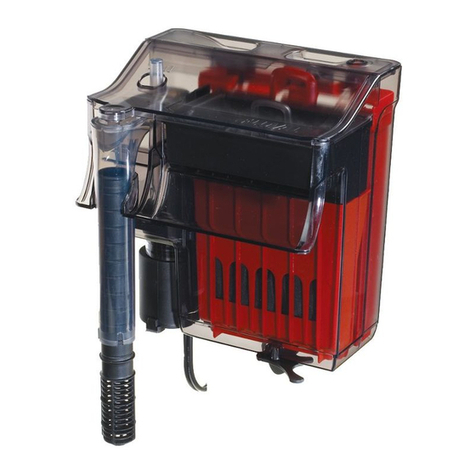
Fluval
Fluval C Series User manual
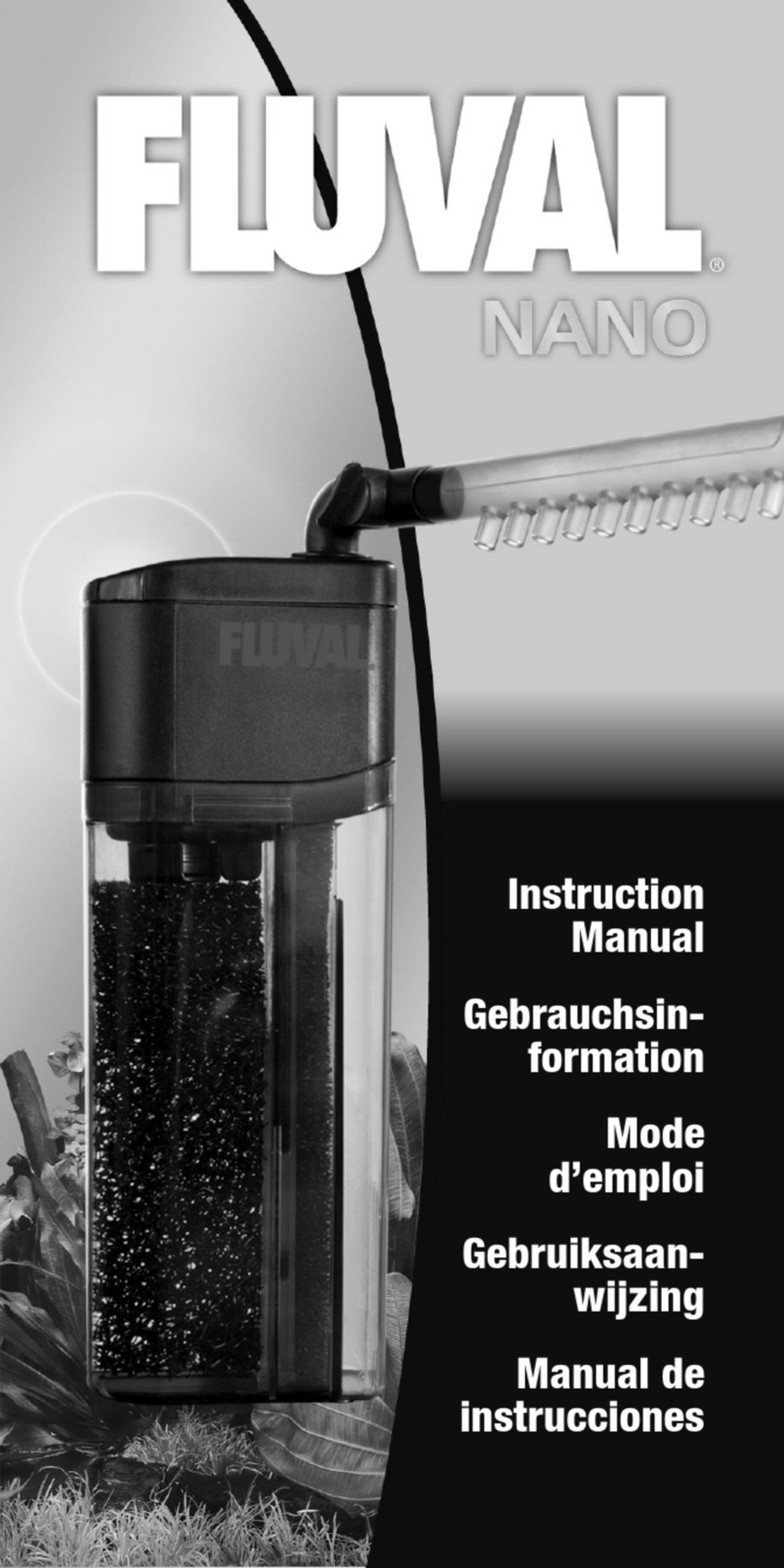
Fluval
Fluval Nano User manual

Fluval
Fluval Roma User manual
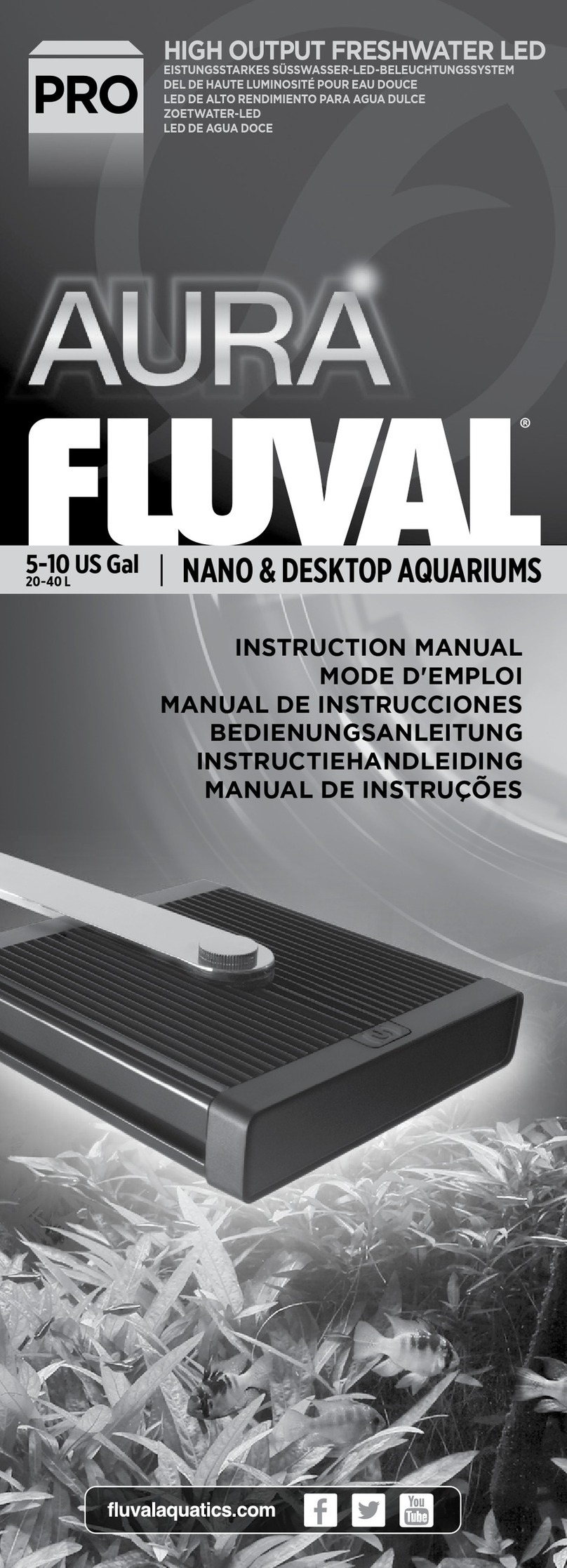
Fluval
Fluval AURA NANO PRO User manual
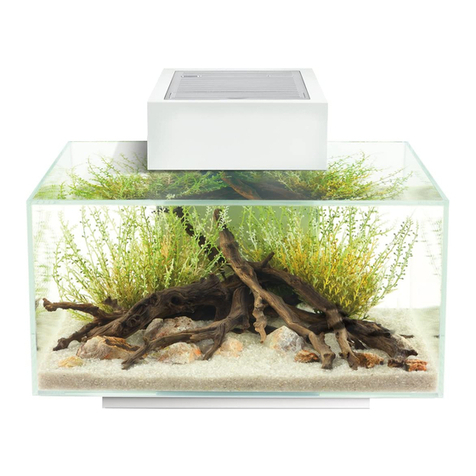
Fluval
Fluval Edge 23 L User manual
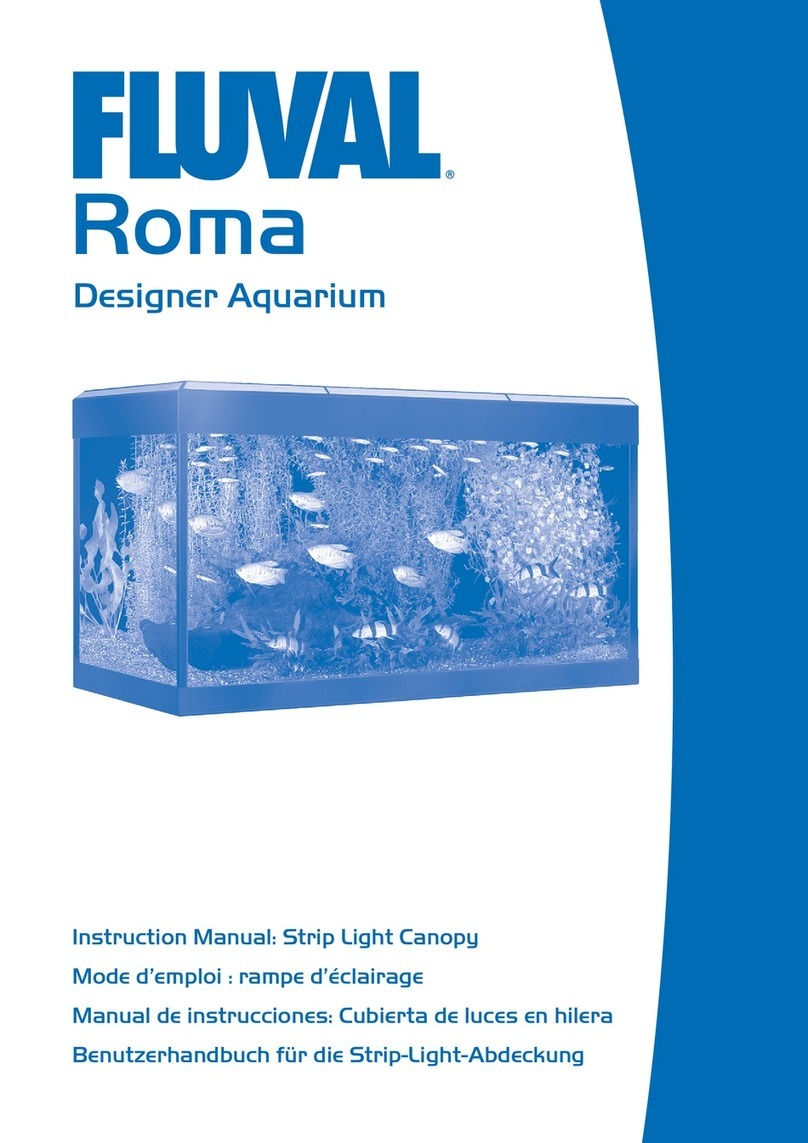
Fluval
Fluval Roma User manual
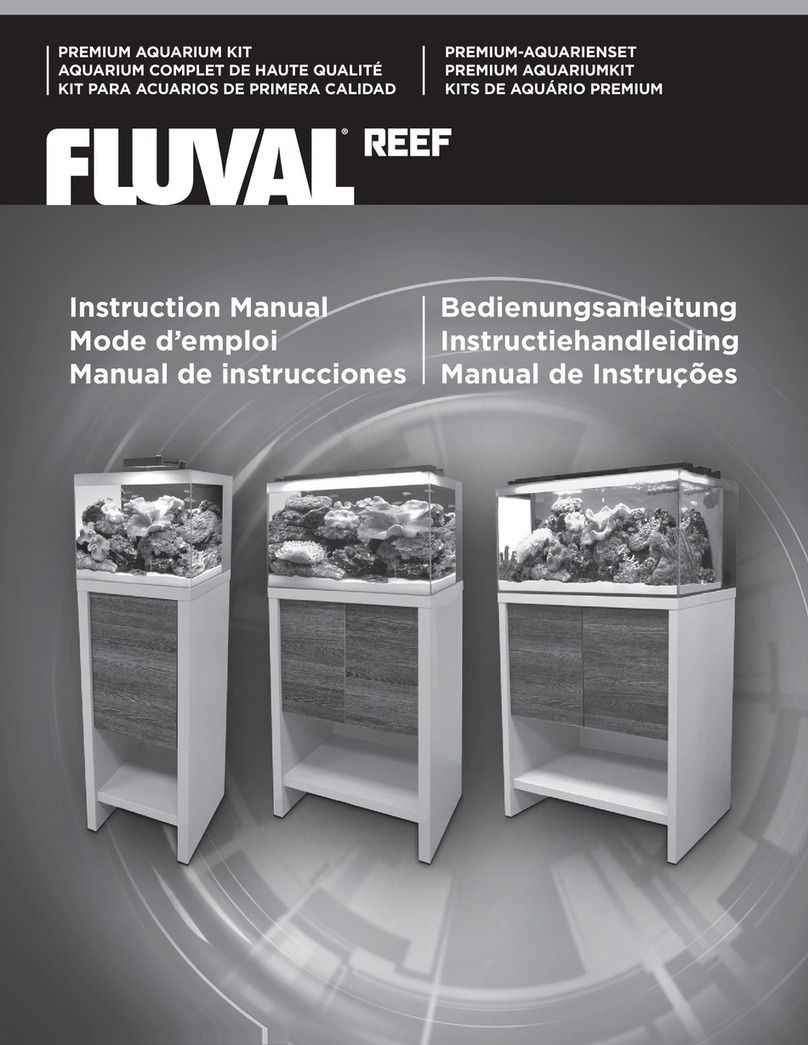
Fluval
Fluval Reef User manual
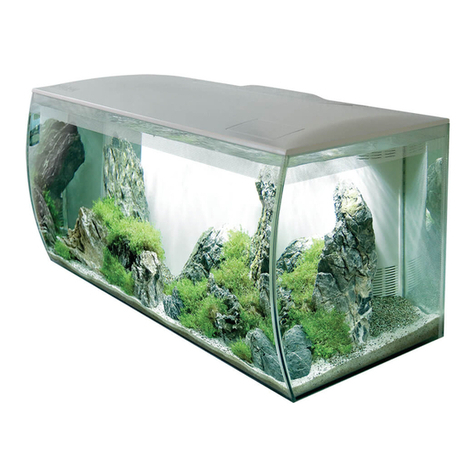
Fluval
Fluval FLEX User manual

Fluval
Fluval SPEC Troubleshooting guide

Fluval
Fluval G3 User manual
Popular Other manuals by other brands
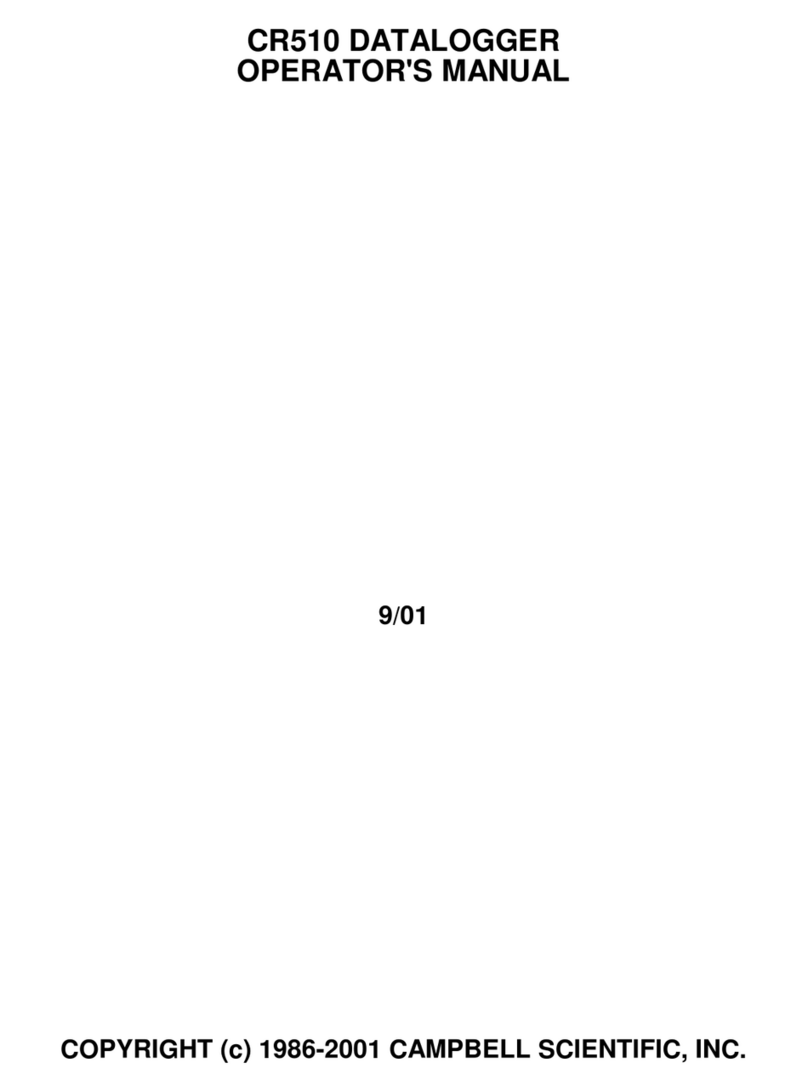
Campbell
Campbell CR510 Operator's manual
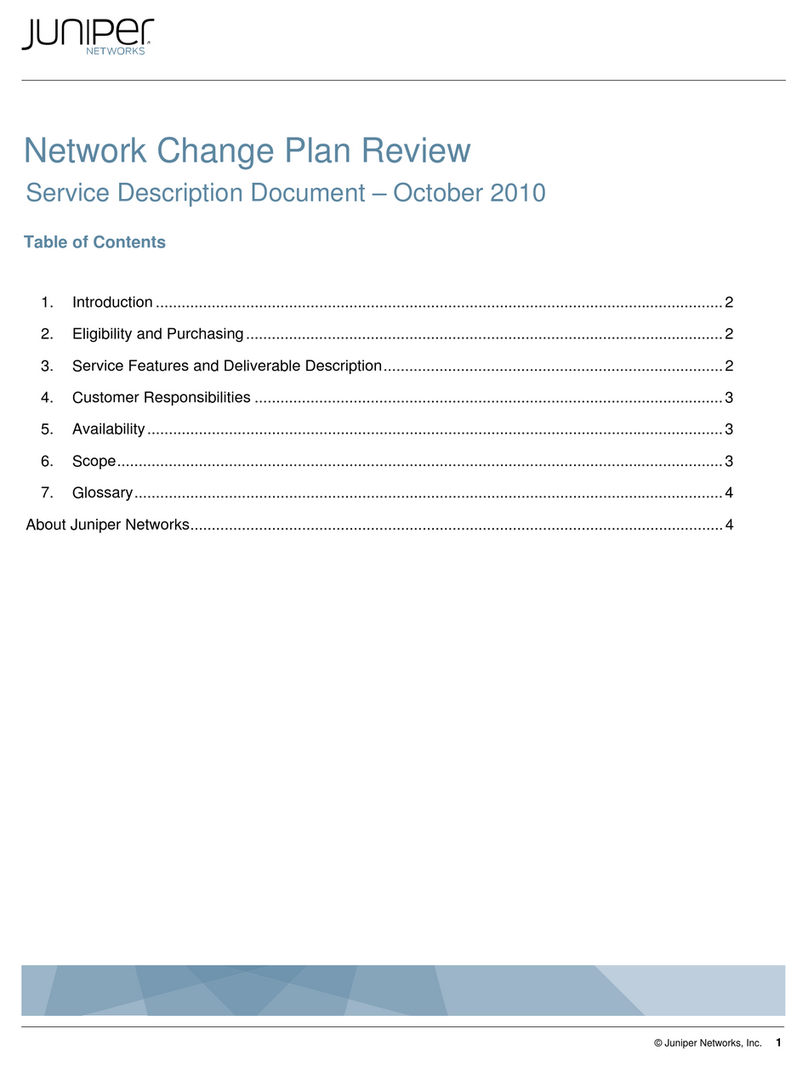
Juniper
Juniper NETWORK CHANGE PLAN REVIEW - SERVICE DESCRIPTION DOCUMENT... manual

Geokon
Geokon 8600-2 instruction manual

BFT
BFT MOOVI 30S Installation and user manual

Arecont Vision
Arecont Vision MegaView installation manual
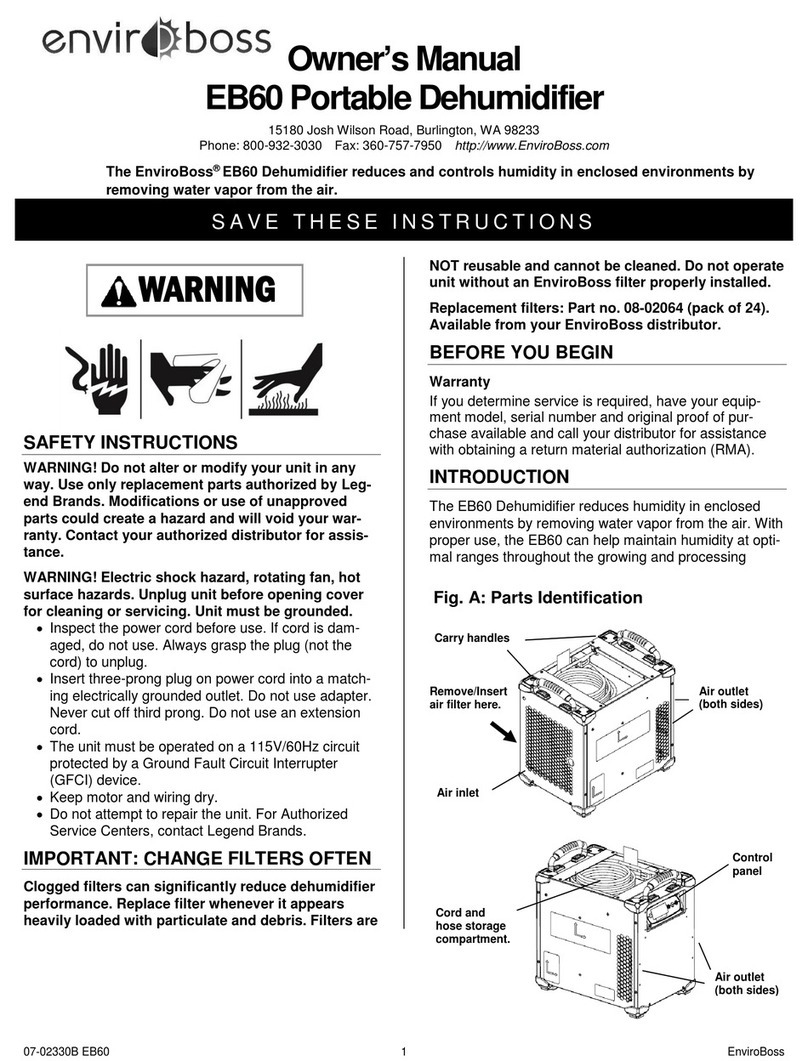
ENVIROBOSS
ENVIROBOSS EB60 owner's manual

